How to Write a Winning Proposal Cover Letter (Plus 5 Real Examples)

First impressions are important—especially in the world of proposals.
That’s why writing a good cover letter is an essential step towards winning a bid. In the request for proposal (RFP) process, this single-page letter marks your first opportunity to grab a prospect’s attention and make it clear that your company is uniquely positioned to solve their problem. So if you’re currently using boilerplate copy… Stop. Immediately .
In this blog, you’ll learn how to write custom proposal cover letters that grab a prospect’s attention and increase your chances of winning RFP responses . Plus, five examples of real proposal cover letters from industry pros.
In this article, you’ll learn:

What is a Proposal Cover Letter?
- What to Include in a Proposal Cover Letter
- How to Write a Proposal Cover Letter
- 5 Real Proposal Cover Letter Examples ⭐
Next Steps: Build Quality Proposals Faster
A proposal cover letter is a single-page document used to pitch your business offerings to a potential client. In it, the customer can tell whether you’re genuinely engaged and have done your research—or if you’ve simply copy and pasted generic language from past business proposals.
It’s also your first opportunity to convince a client to why they should continue reading your proposal. Considering the average team spends 32 hours writing a single RFP response , it’s critical that your proposal cover letter makes a good impression.
“This is the most important five paragraphs one can write as it’s the only part everyone will read. You must knock it out of the park or you’ll lose.”

What Should You Include in a Proposal Cover Letter?
Like any good cover letter, your proposal should open with a unique offer or positioning. It’s important to establish early on why your team is best suited to solve a client’s problem.
A strong proposal cover letter includes:
- A greeting : Introduce your company and what you do.
- Clear summary: Describe your value propositions at a high-level. Be sure to connect these points to your client’s needs. ( Also known as an executive summary. )
- Personalized offer: Explain to the client what you can uniquely provide to solve their problem.
- Relevant references: Help the prospect understand why they should choose you over competitors.
- Visuals: If you have a designer on your team, include visuals that help emphasize the most important content on this page. For example, use callout boxes to make value propositions stand out for busy procurement teams who are skimming the page.
From the offer you present, to the visuals you include, the details in your proposal cover letter should be all about the client. The goal is to show how your company shines before they even get into the details of your proposal. Demonstrate the qualities that you bring to this potential customer by starting out your relationship on the right foot.
Jon Williams, Managing Director of Strategic Proposals , shares the key points you should concisely hit to be successful.
“Thank the customer, show enthusiasm, demonstrate senior sponsorship, briefly introduce win themes–and then shut up and leave the rest to a brilliant exec summary!”

How to Write a Winning Proposal Cover Letter
From reading the RFP thoroughly, to outlining a clear offer, there are six critical steps that seasoned proposal professionals recommend you take to craft a quality cover letter. ( Psst…you can fast-track these steps by using AI for proposal writing . )
Step 1: Read the RFP Cover to Cover
This step seems obvious, but it’s surprising how many teams skip it. You must read the RFP thoroughly, from cover to cover, before beginning your letter.
While reading, take note of any recurring themes from your prospect. Perhaps they focus on quality of design and ease of use. Or maybe they emphasize needing certain functionalities or features—whatever the case, Kori Warriner of KCI Technologies recommends you consider the following questions as you read through the request for proposal:
Questions to consider:
- What is the client’s reason behind the project? (revitalization, aging infrastructure, etc.)
- Where is the funding for the project coming from?
- Does the client have any hot-button issues regarding the project?
- What is the desired end-result?
- What would speak to the client? (retirement-friendly, aesthetics, budget, etc.)
“You need to make the client feel as though you are speaking directly to them.”

While questions may differ by industry, the idea remains the same. Reading the RFP thoroughly helps you better understand the problems your prospect is facing. Which in turn help you paint a clearer picture of how your company can support them.
(It can also help spark ideas for win themes, or specific language, that truly resonates with the prospect—more on that later.)
“Instead of saying ‘we are pleased’ or other overused statements such as that, I introduce my company, and then switch back to talking about what we can do to help the client reach their goals,” Kori explains.
Step 2: Capture Your Prospect’s Attention Early
Chances are, your prospect is extremely busy. They’re likely to skim your proposal cover letter—which is why you should focus on making it memorable. Use it to create a connection to your prospect and capture their attention early in the proposal.
In the structure of a proposal , the first paragraph is the best place to earn your reader’s attention, shares Senior Proposal Consultant Kelly Allen.
“Try to capture the reader in the first paragraph by relating to them in some way. If they are a current client, leverage your relationship. If not, demonstrate a clear understanding of what they need.” Kelly Allen, Senior Proposal Consultant, UKG (Ultimate Kronos Group)
Step 3: Use Clear, Competitive Win Themes
Once you identify their distinct needs, you can formulate which key themes need to be identified in your cover letter. Then, narrow it down to the most persuasive reasons that your prospect should choose your proposal over a competitor. Eileen Kent, President of Custom Keynotes, explains that these are also known as “ win themes ”.
Win themes should be based on what the customer told you they wanted. Position yourself as the one company that can deliver exactly what your prospect is looking for. To do this well, it’s essential that you also understand what your competition is doing.
Here’s how to brush up on what your competitors are offering:
- Review competitors’ websites
- Read competitors’ financial statements
- Look at review websites like G2 or Forrester reports including your competition
- Ask if clients are willing to share competitors’ past RFPs (You never know, unless you ask)
At this stage, you’ll want to focus on how you can stand out from the competition. Eileen also recommends acknowledging any elephants in the room. By that, she means anything that the client may consider your team’s weakness.
She recommends addressing weak points head on to leave a good impression, “The elephant in the room could be your business size. Address it by talking about how you formed a tight team who have exceeded performance expectations, and worked together for years, so they see that as a strength instead,” she explains.
Step 4: Provide a Personalized Offer
Now that you’ve grabbed your prospect’s attention, you need to maintain it. Do this by outlining clear benefits, which speak directly to their pain points in an enticing and clear way.
You should outline how your product will positively impact the buyer and identify what they will get out of your partnership.
“Choose the top 3-5 features of your solution and describe how they will benefit your customer in a single line. Be direct: Here’s what we offer. Here’s how it will solve your problem.”

Step 5: Use a Strong Closing Statement
Your closing statement should be concise, reiterate your capabilities, and highlight the value you deliver. But don’t forget that it’s also an opportunity to connect with your prospect through the proposal process.
“To build a connection, you have to ignore outdated writing advice and not be afraid to use real language” says Rebecca Baumgartner, Sr. Manager, Proposals, PFS .
“Whoever is reading your cover letter can immediately tell if you’re hiding behind jargon or parroting the language of the RFP because you don’t understand what they need,” she explains.
“But when you write authentically, you have the opportunity to show the client you’ve been listening.”
“A great cover letter isn’t stuffy or formal–it’s a conversation between real people, a chance to put aside the technical language of procurement and connect with the human being on the other side.”

Step 6: Add the Finishing Touches
When crafting your proposal cover letter, there are a few final checkpoints to leave your prospect with a good impression.
Graphics aren’t necessary for a proposal cover letter, but they can be helpful. For example: highlighting a quote from a customer in a different font, or using callout boxes to emphasize your key value propositions. Use visuals that help to emphasize your main points, not distract from them.
Here’s what Izane Cloete-Hamilton, CPP APMP, of nFold recommends.
- Use a company letterhead
- Address the letter to the individual specified in the RFP
- Sign the cover letter from a senior person at your company
- If the response is from a strategic partnership between two companies, use dual signatures
- Ensure your letter is no longer than one page
“Sign the proposal cover letter from the highest-level person with signature authority, preferably someone that the customer knows personally.”

Proposal Cover Letters (5 Real Templates)
Now that you know what steps to follow, it’s time to look at some real examples of business proposal cover letters. While you don’t want to copy a boilerplate letter, these templates may provide helpful guidance for your next proposal.
Here are the types of proposal cover letter examples you’ll see above:
- Real proposal cover letter example from a security company
- Example proposal cover letter for an amusement park
- Real proposal letter & executive summary from an enterprise design consultancy
- Winning cover letter example from KCI technologies
- Another proposal cover letter example from a security company
Looking for a sample grant proposal cover letter? Check out this article .
“Remember, your cover letter isn’t about you, it’s about your client. Let them know that you understand them. Then you can talk about how your company can solve their potential challenge.”

To make more time for writing winning proposal cover letters, you’ll need to make some efficiency gains in your overall RFP process. Start by setting your team up with a proposal software that can improve speed and collaboration amongst your team.
Take Aspen Medical for example. Their business development team started using Loopio’s proposal platform in October of 2019. Within a few short months, they were putting together proactive proposals in just 15-30 minutes and seeing a big return on investment (ROI).
In fact, a survey of 165 companies RFP ROI found that those who consistently use proposal software have achieved results of:
- 51% more RFP responses
- 42% less time spent answering proposal questions
- 85% of companies win more business
If you’re looking to improve the pace of your next proposal, try Loopio’s software.
Improve Your Proposal Writing 📝
Want to learn how to master your craft? Read more about proposal writing skills or how to craft a repeatable RFP response template .
Related posts
51 fascinating rfp statistics on the state of bidding in 2024, the raci chart: how to respond faster to security questionnaires, how to transform your rfp process: best practices used by alight.
How to Write a Proposal Cover Letter: Examples + Free Template
Posted by: Cinthya Soto
Proposal cover letters are brief overviews that introduce the more in-depth content of a proposal. Cover letters are normally the first page of a proposal, making them the first impression you will give and your first opportunity to convince the reader to work with you. These letters directly communicate with the client and set the stage for the following proposal details.
If your proposal cover letter is not convincing enough, the reader might not read your entire proposal and choose a competitor. That’s why understanding the do’s and don’ts of proposal cover letter writing is crucial.
In this blog, we’ll teach you how to structure and write a proposal cover letter, what makes a good and a bad proposal, and we even provide a free downloadable template for your firm to use.
What Is a Proposal Cover Letter?
A proposal cover letter is a letter that accompanies an RFP response or bid submission. Its primary purpose is to introduce the proposal, explain its relevance to the recipient, and persuade the reader of the value and credibility of what’s being offered. It sets the tone for the entire proposal, so make sure it’s well-crafted.
The cover letter needs to be persuasive and blow your prospect away because it provides a first impression. Since it’s often the first thing the recipient will see, it plays a key role in the recipient’s decision to even consider reading the full proposal.
The cover letter is frequently the initial opportunity for your proposal to align with the reader’s objectives. While it goes on top of the proposal, it shouldn’t be confused with an executive summary that outlines the main highlights of your proposal.
Why Your Proposal Cover Letter Matters
Your proposal cover letter is made up of the most important paragraphs you’ll ever write because it’s the section everyone will read. That’s why it’s essential to nail it, or you stand the chance of losing the project. A cover letter helps busy clients decide if they’re interested in reading the complete proposal. Therefore, having a winning proposal cover letter is equally important as the actual proposal.
The proposal cover letter gives you a chance to leave clients with a memorable first impression. While proposals lean towards factual information, cover letters offer a more personal touch. Establishing an emotional connection from the beginning significantly increases the likelihood of the reader engaging with your entire proposal.
What Should Be on a Proposal Cover Letter?
Though the specifics of your proposal may vary based on the nature of your offer and your sector, the proposal cover letter should consistently stick to the following structure:
Contact Information
It’s essential to include your contact details, including your name, email, and phone number, as well as your organization’s information such as its name, email, phone number, website, and even its social media handles. For bonus points, include the link to your LinkedIn profile in the heading too so the reader can get a deeper understanding of who you are.
Make these details easy to find by placing them at the top or bottom of the cover letter, ensuring they’re in a bold and easy-to-read font so potential clients have no problem finding them. Using the company’s letterhead for the letter not only ensures the inclusion of this information but also gives a professional touch.
Greeting
This is your chance to introduce your company and what you do. It’s your first opportunity to make a positive impression and establish a connection with the reader.
Begin with a concise statement about your company. This could be your mission statement, a brief history, or an overview of what makes your organization unique. This is your chance to highlight areas where your company excels, which helps you establish credibility.
Additionally, highlight your primary areas of specialization or the main services/products you offer. This will give the reader a clear understanding of your role and what you do.
Summary
Often, decision-makers are drowned in proposals, and they might not have the time or patience to go through every detail initially. A concise summary ensures that they can quickly understand your proposal’s primary objectives and value.
You should provide details about your value propositions at a high level and connect how they meet your client’s requirements. By summarizing how your proposal addresses the client’s specific challenges or needs, you can instantly resonate with them, emphasizing that your solution is tailored to their situation.
Offer
Continuing to the offer, this is where you should further explain how you can provide a personalized solution. Clarify to the client the unique value your solution brings to solve their problem.
Having captured your potential client’s interest, you now have to focus on keeping it. Achieve this by highlighting the clear benefits that directly compellingly address their challenges, making it easy to understand.
While you’ll be mentioning how your work will benefit the prospect, you should also explain what they will win from choosing to work with you.
Here are some tips on how you can accomplish this:
- Select the three to five primary attributes of your solution
- Explain their advantages for your client in a concise statement
- Be straightforward– This is what we provide. This is how it solves your issue
References
In situations where multiple firms submit proposals, having strong and relevant references can set you apart from competitors. It offers an added layer of reassurance to prospective clients about your experience and competence. Essentially, relevant references help the client understand why they should choose you over others.
References also show the prospective client or partner that others have trusted you and that you’ve delivered results. By showcasing references from satisfied clients or partners, you demonstrate that you have been trusted in the past, which can solve any insecurity or concerns the potential client might have.
Visuals
Visuals aren’t a must for proposal cover letters. However, they can enhance its impact by emphasizing crucial information. If you have a designer on your team, you can incorporate graphics that highlight the key points of the letter.
Some examples of what this might look like:
- Highlighting a customer satisfaction quote in a different font to make it stand out
- Using callout boxes to draw attention to your key value propositions (especially helpful for busy teams skimming the page)
- Using the company letterhead
- Including the signature from a senior person at your company
Conclusion
Similar to introductions, many cover letters tend to focus more on the body content than the concluding paragraph. However, ending on a powerful note is as crucial as creating a compelling start. It’s recommended to conclude your cover letter by highlighting a significant benefit and the value your project will offer to the company.
Additionally, when wrapping up your proposal cover letter, always encourage them to continue by reading the complete proposal.
How to Write a Proposal Cover Letter
Now that you know the structure to follow on the proposal cover letter, it’s time to go into the details of how to write a proposal letter.
Powerful First Sentence
Starting with a powerful opening sentence can grab the reader’s attention immediately, encourage them to continue reading, and make your proposal stand out among the endless others they may have received. It’s beneficial to use impactful verbs and straightforward wording to ensure your initial sentence remains engaging and brief.
Demonstrate You Understand the Problem
In any proposal, it’s essential to demonstrate to your client that you understand the problem they’re facing. Highlight their goals and the reasons behind your collaboration. Present the company’s challenges in an easily comprehensible manner. Dedicate a section to focus on the company’s concerns, and later in the cover letter, you can introduce the proposed solutions.
Offer to Discuss the Proposal Further
Before ending your cover letter, you should stress your readiness to dive deeper into the proposal and address any questions or concerns the reader might have. Additionally, this serves as a chance for you to propose a face-to-face meeting with the potential client to further increase your chances of landing the project.
Thank the Issuer for the Opportunity
In the cover letter, you have the opportunity to express gratitude to the proposal’s recipients. Recognizing their participation in the process and expressing appreciation for the opportunity not only demonstrates courtesy but also signals to all reviewers that you’ve closely read the RFP guidelines.
Persuasive Closing
After completing the structure and details of your proposal cover letter, end with a persuasive closing demonstrating your understanding of the next steps. Clients want to understand how you’ll assist them in achieving their objectives and the next steps for moving forward. This demonstrates to them that you can simplify the process by detailing the necessary steps to advance.
As mentioned earlier, you’ll want to encourage the reader to read the entire proposal. However, you should also mention the opportunity to discuss the proposal further. Some examples of what this might look like include:
- “We look forward to the opportunity to discuss our proposal further.”
- “Once you’ve had an opportunity to review our proposal, please don’t hesitate to reach out and follow up with any questions.”
- “Our team will be following up in a week for an update and see if there are any additional ways we can support your team. “
Signature
Don’t forget to include a signature! But who signs it? Who signs the proposal cover letter varies based on different factors. The person who has the relationship with the client is in charge of the strategy, and probably carried out the research leading to the proposal is typically the one that should sign the proposal cover letter.
However, it’s recommended that you have the proposal cover letter signed by the individual with the highest authorization level, ideally someone the client knows.
Otherwise, you should consider having the executive director of your organization sign the cover letter and include their contact details for professionalism. People to consider for signing the proposal cover letter include:
- Executive director
- Account manager
- Executive of executives
- CEO (a strategy used by small firms or when the RFP represents a large portion of a responder’s annual revenue)
- Someone with a senior title
What Makes a Good Proposal Cover Letter?
So, now we know how to structure a proposal cover letter and how to write one, but how can we make it stand out? Here are some tips you should follow to craft a good proposal cover letter.
Capture Reader’s Attention Early
Within the framework of a proposal, the first paragraph is the best chance you have to catch your reader’s interest. This means the introduction is one of the most essential parts of your proposal cover letter. It’s crucial to catch the reader’s attention immediately, so think of an engaging way to introduce yourself and your company. You can do this by finding a way to relate to them or showing that you understand their needs.
Mirror Clients’ Words and Phrases
When writing a proposal cover letter, it’s essential to align your language with the client’s terminology to show that you understand their needs. Failing to do so might not only display a lack of alignment and agreement.
Prioritize the Prospect
A common mistake is making a proposal letter about yourself. Clients aren’t focused on your achievements or your professional journey. They want to understand how you’ll assist them in reaching their objectives. Therefore, the cover letter should focus on how you plan to help the client in reaching their objectives.
If you do want to mention special company achievements, make sure they are relevant to your client’s objectives and provide value.
Get Straight to the Point
Keep it simple. Be clear and avoid any uncertainty. Being unclear can break trust quickly. So, gather all your information before writing, so you don’t sound unsure. Make sure what you write is accurate. You’re the expert. Write confidently and avoid wasting your client’s (or your) time by putting unnecessary information in your proposal cover letter. The goal is to have clients read to the conclusion and sign.
Stand Out From the Competition
The proposal cover letter shows that you understand the client’s worries. It helps you be different from others and encourages clients to read your entire proposal. After reading the cover letter, they can then look at the more detailed parts.
Moreover, the proposal cover letter is your first chance to highlight your value proposition and what makes your offer unique compared to others. For the cover letter, you should focus on how you can distinguish yourself from competitors. You don’t want to “sound” the same as the competition.
RFP Cover Letter Mistakes to Avoid
Now that we’ve seen what makes a cover letter good, let’s take a look at what makes a cover letter bad. Here are the proposal cover letter mistakes to avoid.
Repeating the Executive Summary
Avoid repeating content from the executive summary within your proposal cover letter. Each document — the executive summary, proposal, and cover letter — should be separate. Repetitive information can damage the impact of your message and possibly bore or discourage the reader.
Not Utilizing the Right Software
When creating RFP responses, you need to manage digital assets while keeping everything accurate and up to date. With the right software, like a DAM system , you can store and manage all your project images, videos, and other media in one place. This makes it easy to find and incorporate the most relevant and impressive visuals into your RFP to make it more compelling.
With a DAM, you can quickly search, access, and integrate assets from the software directly into your RFP documents. This means that with the right DAM integrations for your industry, you can create documents in seconds with pre-designed templates.
Additionally, a DAM helps ensure that all images and media used are in line with your brand guidelines and accessed by the right people.
TIP: Want to know more ways a digital asset management (DAM) system can help you create RFP responses and win more clients? Read our Ultimate DAM Guide now.
Not Reading the RFP Multiple Times
Overlooking details is the first challenge in the RFP response process. The data presented by the client within the RFP serves to guide and inform your proposal. Hence, it’s crucial to carefully review the RFP multiple times to ensure all essential elements are seen and there is no critical information missing.
Moreover, if you don’t follow the client’s RFP guidelines, they’ll most likely ignore your response, and all your effort will be lost to those who did thoroughly read the RFP.
Not Understanding the Client’s Needs
This might seem like a general mistake, but it’s a big one. If you don’t understand what the client wants, your whole response won’t matter. For this reason, you need to read the RFP carefully to know what the client looking for. Don’t send a proposal that’s missing details or doesn’t match what they need.
Making the Length Too Long
Your cover letter should always be one page unless you’re dealing with a long proposal of 100+ pages. If you do end up with a longer cover letter, it might be because you are including too much detail. Instead of describing every detail of your proposal (save that for the executive summary), focus on the top three aspects that will catch the reader’s attention. This will leave the reader wanting to know more, encouraging them to read the entire proposal.
Proposal Cover Letter Examples
It’s time to take a look at good proposal cover letter examples to help you further understand what is expected.
Construction Proposal Letter Example
Here is a construction RFP response cover letter example that works:
Source: Examples
Architecture RFP Cover Page Example
Here is an architecture RFP cover page example that works:
Source: Utley Strategies
Engineering Cover Letter for a Proposal
Here is an engineering cover letter example that works:
Free Cover Letter for Proposal Template
Below, you can download a FREE proposal cover letter template made for the AEC industry from OpenAsset partner and proposal writing guru, Rachelle Ray. Just enter your name and email for immediate access.
AEC Cover Letter Template
Responding to an RFP? The downloadable RFP cover letter sample has the structure you need for a proposal cover letter that wins more clients.
How to Create Quality Proposal Cover Letters Every Time
Creating quality proposal cover letters every time isn’t an easy task. However, as the #1 DAM for AEC and Real Estate, OpenAsset can help you find, share, and use the digital assets you need to create high-quality AEC proposals quickly and easily.
With dozens of integrations and useful features, OpenAsset makes it easy to share and manage the heavy amounts of digital assets needed to create winning proposals .
Get your free downloadable proposal cover letter template today. And if you’d like to learn more about our DAM technology, you can reach out to one of our digital asset experts today to schedule a demo .
Get OpenAsset DAM Insights

How to Create Winning Proposals
What to read next.

Civil Engineering Marketing & Sales Strategies to Win More Deals
As the civil engineering industry evolves, so must firms’ strategies to attract and retain clients. Civil engineering marketing and sa...

Answers to the Top 20 IT Questions About DAM Software
As an architecture, engineering, and construction (AEC) firm, managing a growing library of digital assets efficiently is crucial for firms ...
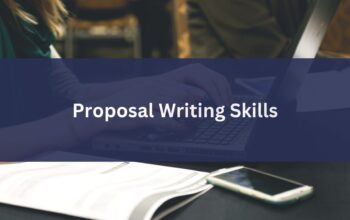
Proposal Writing Skills: Top 18 Characteristics, Traits, and Qualities
A proposal writer is a skilled professional responsible for creating detailed, persuasive documents that outline a company’s offerings...

6 Examples: How to Write a Perfect Proposal Letter (Step-by-Step)
- Understanding Proposal Letters Part 1
- Structuring Your Proposal Letter Part 2
- Key Elements of a Proposal Letter Part 3
- Step-By-Step Guide to Writing a Proposal Letter Part 4
- How to Write a Business Proposal Letter (Example) Part 5
- How to Write a Job Proposal Letter (Example) Part 6
- How to Write an Academic Proposal Letter (Example) Part 7
- Successful Business Proposal Email Example Part 8
- Example of a Proposal Letter for a Marketing Project Part 9
- Effective Job Proposal Email Example Part 10
Part 1 Understanding Proposal Letters
A proposal letter is a written document sent to a potential client, employer, or partner, outlining your proposed idea, project, or plan. It aims to persuade the recipient to consider your proposal and take action on it.
To begin with, think of the end goal. Identify what you want to achieve with your proposal letter. This could be anything from securing a contract to obtaining funding for a project. Having a clear objective in mind helps you create a compelling document.
Next, research your target audience. Understand the recipient’s needs, preferences, and potential pain points. Tailor your letter to demonstrate how it addresses their specific requirements boosting your chances of success.
Now, let’s discuss the structure of a proposal letter. Generally, it follows a simple layout:
- Salutation : Start with a formal greeting, addressing the recipient by their full name or title.
- Introduction : Introduce the purpose of your letter, highlighting the central theme of your proposal.
- Body : Explain your proposal in detail, including benefits, costs, timeline, and any other vital information.
- Conclusion : Summarize the key points and request for a follow-up meeting or discussion.
- Closing : End with a courteous sign-off, such as “Sincerely” or “Best regards.”
Part 2 Structuring Your Proposal Letter
Starting with a strong introduction.
Begin your proposal letter with a friendly, professional tone that captures your reader’s attention. Introduce yourself and your organization, briefly explaining your background and experience. Connect with your reader by showing that you understand their needs and goals. Make sure you mention the purpose of your proposal and the solution you want to offer with confidence.
Proposing Your Idea
After laying the groundwork, dive into the details of your proposal. Explain what your solution or idea is and how it addresses the needs and goals mentioned earlier. Make sure to highlight the key benefits, focusing on what’s in it for your reader. Be specific and use facts, figures, and examples to support your claims. Keep your paragraphs organized and use bullet points or bold text to emphasize important information.
For example:
- Benefit 1: Reduction in production costs by 30%
- Benefit 2: Improved customer satisfaction
- Benefit 3: Streamlined workflow processes
This will help your reader easily understand and remember the main points of your proposal.
Ending with a Perfect Conclusion
End your proposal letter on a positive note, summarizing the main benefits and advantages of your idea. Reiterate your enthusiasm and commitment to providing the best solution possible. Offer your assistance in answering any questions or addressing concerns your reader might have. Finish with a call-to-action, such as setting up a meeting or signing a contract, and provide your contact information so they can easily get in touch with you.
Part 3 Key Elements of a Proposal Letter
Clear objective.
A successful proposal letter begins with a clear objective. When writing your letter, make sure to state the purpose of the proposal in a concise and straightforward manner. This helps the reader understand what you want to achieve and the solution you’re providing. Avoid using jargon or complex language, as it can be confusing and might lead the reader to misunderstand the core message.
Specific Details
Providing specific details is important to make your proposal letter more persuasive. This includes outlining the scope of work, timeframe, and estimated costs for the project. You should also highlight any unique aspects of your proposal that set it apart from competitors or alternative solutions.
For example, if you’re proposing a marketing campaign, you could outline the target audience, marketing channels you’ll use, content creation, and metrics for success. By providing specifics, you demonstrate that you’ve put thought into the project and have a well-planned approach, instilling confidence in the reader that you are the right choice.
Compelling Reasoning
Your proposal letter should include compelling reasoning for why the recipient should choose your solution. This can include:
- Demonstrating your expertise and experience in the field
- Explaining the benefits of your proposed solution
- Sharing success stories and testimonials from past clients or projects
- Outlining how your proposal aligns with the recipient’s goals and needs
For example, continuing with the marketing campaign proposal, you could discuss how your experience in handling similar projects has led to significant increases in sales and brand recognition for your clients. Also, you might explain how your approach aligns with the recipient’s target demographics or business objectives to strengthen your case.
Part 4 Step-By-Step Guide to Writing a Proposal Letter
- Start by addressing the recipient with their professional title and full name.
- In the first paragraph, state the purpose of your letter and summarize your proposal briefly. Make sure to highlight the key benefits of your proposal for the recipient or their organization.
- In the next few paragraphs, provide details about your proposed project or partnership, such as your objectives, timelines, and expected outcomes. Also, showcase your competence and experience by mentioning relevant achievements or past collaborations.
- When closing the letter, express gratitude for their time and consideration. Offer to provide further information or answer any questions they may have.
- Lastly, include your full name, title, contact information, and signature.
Choosing the Right Format
Make sure your letter is in the right format to make it look professional. You will typically use a business letter format, which includes:
- Your contact information
- The recipient’s contact information
- Subject line (optional)
- Body of the letter
[Contact Details]
Dear [Recipient’s Name],
Re: [Proposal subject]
[Body of the letter]
[Your Name]
Setting the Tone
Maintain a friendly yet professional tone throughout your proposal letter. Be polite and respectful, addressing the recipient by their full name, and using “please” and “thank you” when appropriate. Keep the language conversational but clear, so your reader can easily understand your proposal. Stay away from overly technical terms or jargon, unless it is necessary and you’re sure your recipient will understand it.
Drafting the Body
Begin by providing an overview of the problem or need your proposal is addressing. Clearly explain the issue and why it’s important to solve it. Next, describe your proposed solution in detail, outlining your plan and how it will benefit the recipient. Be specific and realistic in your description; for example, if you’re proposing a project with a timeline and budget, include concrete figures and dates.
Break down your proposal into smaller sections, using separate paragraphs or even bullet points if helpful. This makes it easier for your reader to follow your argument and understand the various aspects of your proposal. Here’s a quick outline of what you should cover in the body of your proposal letter:
- Problem/need introduction
- Proposed solution
- Benefits of the solution
- Timeline and budget (if applicable)
- Your qualifications (why you’re the right choice to carry out the proposal)
- A call to action (how they can take the next step)
Proofreading Carefully
Before sending your proposal letter, take the time to thoroughly proofread it for errors in grammar, spelling, and formatting. Ensuring that your letter is polished and error-free shows the recipient that you take your proposal seriously and are committed to quality in your work. If possible, ask a colleague or friend to review your letter as well since a fresh set of eyes can often catch errors that you might have missed.
Part 5 How to Write a Business Proposal Letter (Example)
When writing a business proposal letter, your goal is to present your ideas or services in a way that’s compelling and clear. Business proposal letters can be sent to potential clients, partners, or investors. Here are some tips for writing an effective business proposal letter:
- Start with a brief introduction of your company and its offerings.
- Highlight the benefits of your product or service, focusing on the value it will bring to the recipient.
- Be specific about costs, timelines, and any other relevant information.
- Use clear, concise language, and avoid using jargon or overly technical terms.
- Close the letter by mentioning next steps, such as arranging a meeting or following up with further information.
Subject: New Collaboration Opportunity with [Your Company Name] Dear [Recipient’s Name], I’m reaching out on behalf of [Your Company Name] to discuss an exciting opportunity for collaboration. Our team has developed an innovative marketing strategy that could greatly benefit your company by increasing your customer acquisition rate by 20% within the next six months. […] We look forward to the possibility of working together and will be in touch shortly to schedule a meeting to discuss further details.
Part 6 How to Write a Job Proposal Letter (Example)
Job proposal letters are typically written by job seekers looking to create their own position within a company or to highlight their unique skills and experience. These letters should be concise, persuasive, and tailored to the specific company and its needs. Here are some key points to include:
- Briefly mention your background and skills relevant to the position.
- Describe how your unique abilities can positively impact the organization.
- Offer specific examples of how you can contribute to the company’s goals and objectives.
- End with a call to action, offering to provide more information or meet to discuss the opportunity further.
Subject: Job Proposal for Social Media Manager at [Company] Dear [Recipient’s Name], As an experienced social media professional, I am excited by the opportunity to bring my skills and expertise to [Company]. Based on my research of your current online presence, I believe I can contribute to increasing your brand awareness and engagement through a tailored social media strategy. […] I would appreciate the opportunity to further discuss how my background and passion for social media can contribute to [Company]’s growth and success. Please feel free to contact me at your convenience.
Part 7 How to Write an Academic Proposal Letter (Example)
Academic proposal letters are typically written by students or researchers seeking funding or approval for a research project. These letters should be well-organized, clear, and focused on the proposed project’s objectives and potential benefits. Consider the following when working on your academic proposal letter:
- Introduce the main research question or hypothesis.
- Provide a brief overview of the project’s methodology and work plan.
- Describe the expected outcomes and significance of the research.
- Include information about the project’s potential impact on the field and broader society.
Subject: Research Proposal for Study on the Effects of Mindfulness-Based Interventions Dear [Recipient’s Name], I am writing to propose a research project investigating the effects of mindfulness-based interventions on individuals suffering from chronic stress. The primary aim of the study will be to determine the overall efficacy of these interventions in reducing stress levels and improving overall mental wellbeing.
[…] I am confident that the results of this research will contribute significantly to our understanding of the relationship between mindfulness and mental health.
Part 8 Successful Business Proposal Email Example
Imagine you own a marketing agency, and you’d like to help a local business grow their social media presence. Start by addressing the recipient’s pain points, such as limited engagement on their platforms. Then, briefly introduce your agency and express excitement about working together:
Subject: Boost Your Social Media Engagement with Our Expertise
We’ve noticed that your business has a strong online presence, but engagement on your social media channels seems to be underwhelming. Our team at [Your Agency’s Name] can help you turn this around and maximize your audience interaction.
With our tailored social media marketing strategies, we’ve helped numerous clients increase their online engagement by an average of 65%. Our approach focuses on:
– Identifying and targeting your ideal customers – Creating high-quality, engaging content – Enhancing brand image and authority
We would love to discuss this opportunity further and provide you with a detailed plan on how we can work together to elevate your social media presence.
Looking forward to hearing from you, [Your Full Name] [Your Agency’s Name] [Contact Details]
Part 9 Example of a Proposal Letter for a Marketing Project
I’m excited to present our idea for boosting sales at ABC Company through a targeted marketing campaign.
As we discussed in our previous meeting, the sales figures have plateaued over the past year. Our marketing team has analyzed the situation and developed a strategy to increase brand awareness and boost sales. The campaign will focus on social media, email marketing, and online advertisements.
By implementing this project, we expect the following results:
– Enhanced brand visibility – Increased customer engagement – A 20% rise in sales within six months
The total cost for the marketing campaign is $10,000. This includes creative design, copywriting, ad placements, and performance monitoring. We propose a six-month timeline for the project, starting in December.
I would be delighted to discuss the proposal in more detail or provide further information as needed. Please let me know your availability, and I’ll schedule a follow-up meeting at your convenience.
Thank you for considering our proposal. I look forward to working together on this exciting project.
Best regards, [Name]
Keep in mind that proposal letters vary in length and detail depending on the project’s size and complexity. Always customize your letter to fit the specific requirements and expectations of the recipient.
Part 10 Effective Job Proposal Email Example
Now, let’s say you’re a freelance graphic designer aiming to work with a company that recently launched a new product. Start by expressing your intentions and introduce your expertise. Showcase your experience and services offered related to their needs:
Subject: Elevate Your New Product Launch with Professional Graphic Design Services
Hello [Recipient’s Name],
I recently came across your new product launch, and I believe your marketing materials could benefit from some professional graphic design enhancements. As an experienced graphic designer, I’d like to offer my services to help elevate your visual presentation and attract more customers.
With over five years of experience in the industry, I can create compelling designs for:
– Product packaging – Promotional materials (e.g., brochures, banners, posters) – Social media graphics – Website elements
Please find my online portfolio attached, showcasing my diverse design styles and previous projects. I’m confident that my skills and expertise can significantly contribute to your product’s success in the market.
If you’re interested, kindly reach out to me to discuss further details and pricing.
Best regards, [Your Full Name] [Contact Details]
Frequently Asked Questions
1. what are the key components to include in a proposal letter.
A well-crafted proposal letter should include the following key components:
- Opening Statement: Start with a concise and informative introduction that grabs the reader’s attention.
- Background Information: Provide necessary context to help your reader understand the problem or opportunity.
- Proposed Solution: Outline your proposed solution, including your unique selling points or innovative approach.
- Timeline and Budget: Give a brief overview of the estimated project duration and budget required.
- Call to Action: End with a call to action, inviting the reader to take the next step, whether it’s to request more information, schedule a meeting, or approve the proposal.
2. Can you share some tips on making a proposal letter persuasive?
To make your proposal letter persuasive, consider these tips:
- Use clear and concise language to effectively communicate your ideas.
- Focus on the benefits that the reader will gain from your proposal, emphasizing the value you bring.
- Include specific examples, case studies, or testimonials to back up your claims.
- Address any potential objections or concerns the reader may have and provide appropriate solutions.
3. What’s the best way to structure a proposal letter for a research project?
A research proposal letter should generally include the following structure:
- Introduction: Provide a brief overview of your research topic and its significance.
- Background and Literature Review: Summarize relevant research and demonstrate your expertise in the field.
- Research Questions and Objectives: Clearly state your research questions and the expected outcomes.
- Methodology: Explain your research approach and the techniques you will use.
- Expected Results: Provide an idea of the anticipated results and their significance.
- Timeline and Budget: Outline the project timeline and the funding required.
4. How do I create an effective business proposal letter for a potential client?
To create an effective business proposal letter, follow these steps:
- Start with a strong opening that captures the client’s attention.
- Clearly state the problem or opportunity your proposal addresses.
- Present your proposed solution, focusing on its unique and beneficial aspects.
- Provide evidence of your expertise and past successes, such as case studies or testimonials.
- Detail any necessary resources, deliverables, and a realistic timeline.
- End with a compelling call to action, inviting the client to take the next step.
5. In what order should I present my ideas when writing a proposal letter step by step?
When writing your proposal letter, present your ideas in a logical order that flows well for the reader. A typical order could include:
- Opening Statement: Grab the reader’s attention and introduce your proposal.
- Background Information: Provide relevant context to help your audience understand the issue or opportunity.
- Proposed Solution: Detail your unique and compelling solution to the problem.
- Evidence and Support: Showcase your expertise, past successes, and any supporting data.
- Timeline and Budget: Give an overview of the project’s duration and required funding.
- Call to Action: Conclude with a strong call to action that encourages the reader to move forward.
- 5 Examples: How to Write a Letter of Employment
- 6 Example Emails: How to Ask for a Letter of Recommendation
- 5 Effective Examples: How to Write a Letter of Intent
- 5 Effective Examples: How to Write a Two-Week Notice
- Cover Letter vs. Letter of Interest vs. Letter of Intent
- 9 Inspiring Examples - How to Write a Thoughtful Apology Letter
The virtual conference for Strategic Response Management | Register now
How to write a proposal cover letter [with example]
Like the devilishly tempting Hostess Ding Dongs treat, a proposal cover letter has to be short, sweet, and dense. Unlike that aforementioned hockey puck of delectability, proposal cover letters cannot be mass-produced. To write a proposal cover letter with nary a wasted word, you first need to understand its strategic significance in the overall proposal.
I’ve spent more than 17 years on proposals and have written hundreds of proposal cover letters. When I started, we printed out proposals and created huge binders to share with reviewers. Reviewers would open the binders to see the proposal cover letter, then an RFP executive summary , and then dig into the proposal itself. Binders are part of a bygone era; there’s been a big digital shift since I started.
Requests for paperless submissions and the growing popularity of online portals has altered the strategic significance of the proposal cover letter. It’s gone from a “must-have” element, to a “nice-to-have” one. My background is predominantly healthcare and insurance. Anecdotally, maybe only 30% of requests for proposals (RFPs) in healthcare and insurance request executive summaries while most volunteer that a cover letter is optional. If they give you an option, take it.
Some online portals don’t even give you an opportunity to include extra documents like cover letters. In such cases, you now have to include the cover letter as part of your proposal PDF. At the same time, RFPs are more complex than ever, requiring more details in submitted proposals. Issuers expect you to have your content in order, and a lot of it.
Speaking of issuers and what they’re looking for in proposal cover letters: They don’t need information that they can find on your website, that they can Google, or that sounds canned. They want to make sure you’ve reviewed the RFP requirements, and it’s absolutely essential to hit them with that up front, in your proposal cover letter. Especially if your solution meets all of the issuer’s requirements. Emphasize that fact simply and directly.
What is a proposal cover letter?
The proposal cover letter is meant to frame up your RFP proposal. It’s not a rehashing of the proposal or executive summary . It’s a vehicle to thank the issuer for the opportunity to respond, to say, “We’ve seen your business requirements and composed this proposal because we think we’re the best partner for you.” Think of it as the bow on your RFP proposal package.
Whether paper, PDF, or stone tablet, one thing that hasn’t changed about the proposal cover letter is that it’s your first opportunity to declare the value propositions that differentiate yours from competitive proposals. These value props will be the threads that weave through your proposal, from cover letter, to executive summary, to answers to questions.
As far as length, I aim for a page and a half when I write proposal cover letters. Try to keep it under two. Go longer only if a template or specific framework for the cover letter is provided by the issuer, which is sometimes the case in government RFPs.
Why a good proposal cover letter matters
RFP reviewers will be looking for deviations in responses. Deviations among responders as well as deviations from their (the issuers) requirements.
When you can write a cover letter and state, “After reviewing the RFP, we are confident that our solution meets all requirements and detail that fact in our proposal,” you make a compelling argument for reviewers to concentrate on how your proposal illustrates how you solve problems. They’ll notice cover letters that do not mention something that direct, and will review those proposals to look for where the solutions fall short.
When should you write the proposal cover letter?
It’s page one so it should be written first, right? Not necessarily. I’m a proponent of writing the executive summary first, the cover letter second, and then building the proposal. Certainly review the RFP first so you can determine what it’s asking for. But don’t just jump into a response from there. Take the time to establish the value props that will make it a cohesive proposal.
Writing the executive summary first helps you formulate your argument and determine which content you’ll need for the proposal. Once you know what you need to be persuasive and how you can solve the issuer’s problem, then you can develop the three-to-five value props (I try to boil it down to three solid, unique value props) that you can define in the proposal cover letter.
Who signs the proposal cover letter?
Notice I didn’t title this section, “Who writes the proposal cover letter?” The person who writes it and the person who signs it may not be one and the same.
If your proposal team is fortunate enough to have a dedicated writer, then have them write the letter based on input from the frontline sales rep. Whoever writes the letter must be fully informed of response strategy and have intimate knowledge of the proposal and executive summary. Strategy, voice, and style need to be consistent across all documents (cover letter, executive summary, and proposal).
Who signs it depends on a variety of factors. In most cases, the frontline sales rep will sign the proposal cover letter. They have the relationship, own the strategy, and likely conducted the discovery that informed the proposal. However, it’s not uncommon for an executive sponsor such as a VP of sales to sign. The thinking being that executive reviewers may appreciate seeing a proposal that’s been vetted by a fellow executive.
There are also those cases when the executive of executives, the CEO, signs the letter. There are two common scenarios for this play. One, the RFP may be large enough to represent a significant percentage of a responder’s annual revenue. Two, the responding organization is concerned with appearing relatively small, and in an effort to improve its stature, seals the proposal with a CEO’s signature.
There’s definitely some gamesmanship at play here. Even so, the name on the letter will never overshadow the content of the proposal.
7 steps to write a proposal cover letter
The compact nature of the proposal cover letter makes it difficult to fit everything in one or two pages. Good writers are valuable assets in these instances. Every proposal cover letter should contain the following sections:
- Thank the issuer (and broker, where applicable) for the opportunity.
- Recite your understanding of the opportunity to validate that you reviewed the RFP requirements.
- List your abilities to meet requirements. If you can meet all of them, lead with that fact.
- Describe your value propositions. You’re trying to portray that, “This is what we bring to the table, and that’s why we’re the best choice.”
- Provide a high-level future snapshot of what business will look like after your solution is chosen.
- Conclude with a persuasive delivery of your understanding of next steps: “We look forward to the opportunity to discuss our proposal further.” Show that you’re able and willing to move forward in the sales lifecycle.
- Sign it from the frontline sales representative or executive sponsor. This should not look like a form letter from the organization as a whole.
3 common mistakes to avoid
Beyond the mistakes of not including a proposal cover letter at all or writing one that’s too long, proofread your next letter for the following mistakes before sending it.
- Avoid repeating anything from the executive summary or proposal. Those documents need to live on their own, just like the proposal cover letter.
- Don’t waste space with your resume. Something like this… Responsive’s growing list of 600+ clients including 40+ Fortune 500 organizations continue to take advantage of our one-of-a-kind Unlimited User licensing model, expanding their usage on the platform to scale organizational success. With Responsive as their team’s support system, every day they break down silos by facilitating collaboration and efficiency in their RFx response process ….is boilerplate that can appear elsewhere in the proposal or not at all, given that it’s likely available to the issuer on your corporate website.
- If a broker is involved, thank them, too. The proposal cover letter is also an opportunity to directly address the issuer. This can be particularly valuable when a broker is involved. Some issuers rely on RFP brokers to sift through responses to make sure only the best possible solutions get serious consideration. Ignore these brokers at your peril. While the response and executive summary will address the issuer and the problem at hand, the cover letter is where you can give a nod to the broker. Acknowledging their involvement in the process and thanking them for the opportunity as well will at the very least alert all reviewers that you paid close attention to the RFP requirements.
- Don’t guess. Make sure you or someone on your team does the legwork and discovery to inform your response strategy. The more you have to guess, the longer the letter will take to write.
Proposal cover letter example
Feel free to use the proposal cover letter example below as a template for your next letter. One of the many advantages of proposal software such as Responsive is the automation of the cover letter process. Don’t get me wrong, you still have to write it, but RFP software helps:
- Access and write in the template within the platform (no need to toggle back and forth between a word processor and whatever application you’re using to build your proposal)
- Include identical brand elements as the proposal and executive summary
- Add the cover letter to the front of the proposal and/or executive summary when you output it for submission
When you use the following example, you’ll need to swap out the RFPIO-centric items with your own company and solution information as well as the custom value props for that specific proposal. The three value props highlighted in the example are Salesforce integration, data security, and customer support. For your letter, these will be specific to your solution and the problem stated in the RFP.
Hi [Issuer(s) first name(s)],
Thank you for considering Responsive as your potential vendor for RFP automation software. We are cognizant of the effort it takes to make a selection like this, so we very much appreciate the opportunity. First and foremost, Responsive meets all of the requirements detailed in your RFP. That’s illustrated in greater detail in this proposal. In the meantime, the following capabilities make us confident that Responsive is the most qualified company and solution for [issuing company name’s] [RFP title].
- Helping businesses improve and scale their RFP response process for greater efficiency. The time and resource savings reported to us from our clients has allowed them to participate in more proposals and provide high-quality responses that create additional revenue opportunities.
- Automating the import and export functions, centralizing content for RFPs, and facilitating collaboration among key stakeholders.
- Managing knowledge and content through our AI-enabled Content Library .
- Giving clear visibility into the entire RFP process through reports and dashboards—including project status and progress, and analytics for actionable insights.
We know that it’s important for [issuing company name] to find a solution with a strong integration with Salesforce. This proposal details Responsive’s integration with Salesforce , and how it will work for you. In addition to that, Responsive’s open API allows for integrations with many other technologies for cloud-storage, collaboration, and other desired platforms.
We also take your data security concerns highlighted in the RFP very seriously. You can be assured that your data will be safe and accessible. We work with a variety of enterprise customers and understand the necessary level of security that is required. From the beginning, we made it a priority to build security right into Responsive’s technology, which we continue to maintain. We are SOC 2 and ISO27001 certified, while continuing to pursue other best-in-class certifications to ensure security.
Regarding your requirement for ongoing support following implementation: When it comes to customer support, our technical and account managers are high performers. We have an expert group of 110 nimble programmers and developers who are always ready to provide quick technical fixes (that you can request right within the solution). Our reliable and attentive account team is ready to fully support [company name] should we move forward as your vendor.
Upon deploying Responsive, it’s intuitive user experience is simple to get used to. You’ll also get free access to Responsive Academy for all your training needs, now and in the future. Getting started is as simple as loading that first project. The whole team will be collaborating from there. As your Content Library grows, machine learning will provide more and more automation opportunities. It won’t be long before you see a drastic uptick in proposal quality and number of proposals submitted.
If you’re interested in comparing our solution to other comparable tools, we recommend that you visit software review platform G2 Crowd’s top RFP Solutions grid . This information is based on user satisfaction and places Responsive at the top in all categories.
We look forward to the opportunity to discuss our proposal further. We appreciate your consideration, and wish you luck on your selection.
Thanks, [Signee’s name] [Signee’s title]
You should have it “cover”-ed from here
If you’ve done your research and client discovery, and you know the value props specific to the RFP that you’ve already reviewed, then letter writing will go fast. The better you know the client and people involved, the easier it is going to be for you to tailor the proposal cover letter, the executive summary, and, most importantly, the RFP proposal.
To learn more about how Responsive can help you write better proposal cover letters, schedule a demo today!
- How to accelerate the sales cycle with proactive proposals
- How can AI help with your proposal?
- [Guide] RFP proposal software for small businesses
Ready to see Responsive in action?
Find out why leading response teams across the world turn to Responsive for their Strategic Response Management and RFP software needs.
Learn more about RFP software
- Privacy Overview
- Strictly Necessary Cookies
- Marketing Cookies
This website uses cookies so that we can provide you with the best user experience possible. Cookie information is stored in your browser and performs functions such as recognising you when you return to our website and helping our team to understand which sections of the website you find most interesting and useful.
To learn more read our Cookie Policy .
Strictly Necessary Cookie should be enabled at all times so that we can save your preferences for cookie settings.
We use cookies to enhance your browsing experience, serve personalized ads or content, and analyze our traffic. By choosing to leave these enabled, you consent to our use of cookies.
Please enable Strictly Necessary Cookies first so that we can save your preferences!
How To Write a Killer Proposal Cover Letter
In general, the three pieces of your proposal that will be read and examined properly are:
- Cover letter / Introduction / Executive Summary
This isn’t a guess. Hundreds of thousands of proposals have been sent using our software Better Proposals and we’re able to pull together statistics from that. We’ve learned that most of the time people spend on a proposal is in those three areas.

This is the meat of your proposals and the content your customer is most interested in. Make their agreement process easy by spending some extra time on these sections.
Of course, when using Better Proposals, the extra time isn't a lot since we speed up your proposal process and give you more time to spend on the creative process.
Digging Deep
That said, the most important thing to include in your proposal letter is that you understand the reader's needs and long-term goals.
This extends beyond simply telling them that they want a quote on a [fill in the blank].
In your meeting with the prospect, you should be digging deep into why they really want it. What are the underlying reasons behind it?
I've spoken about this in this video detailing why most people write their introduction or cover letter wrong.
Try to understand the benefits they expect you to bring them, their budget and whether they have some examples for the solution they want you to provide.
You should know all of this before you even start writing your proposed solution.
Let's look at an example
Your client might say “we need a new website because ours is outdated”. Okay, but what will an up-to-date one do? “Bring us more leads”. Okay, so what you really want is more leads.
You see? And you can go far deeper.
“What’s wrong with the number of leads you’re getting at the moment?” “Why is that even a problem?”
What you might find is that they’re scared their new competition across the road is going to put them out of business in a year if they don’t act fast. Now you have the information you need.
At this point, your proposal letter is about addressing the REAL fears, situations and options rather than at just a surface level.
Clients love to hear their own words in your proposal letter. It gives them confidence in their choice and shows them that you listened.
Now, the rest of your proposal is going to contain details about your plan, your pricing, why you’re different and your case studies. That's what all the best proposal examples include.
If your proposal letter addresses their real issues then you can guarantee that it's going to be read cover to cover.
What is a cover letter?
In the world of business proposals, a cover letter is the initial part of your proposal where you explain that you know the client’s situation and you know exactly how to solve their problem.
The best proposal letters I’ve seen weren’t written with amazing language. What made them stand out is that the person writing them listened carefully to the client before sitting down and writing the proposal letter.
They highlight how their process will help the client achieve their long-term goals.

My advice is to use simple language all through your document. Avoid technical jargon and make sure that the client understands everything that is being said.
After all, they will have less technical knowledge than you and also, people tend to mistrust things they can't understand.
Why do you need a cover letter?
Simply put, the client reading the business proposal needs to get engaged to read the whole thing before signing.
You could just give them a detailed specification right from the bat, but that will make the client too focused on numbers and specific results.
The proposal letter shows them that you’re listening and it gets them “hooked” to start reading.
After they’re done with the cover letter, they can move on to the more technical bits in the detailed specification.
Make sure to keep your proposal letter short, not longer than one page. You should keep your client in mind when you write a proposal letter. Don't expect them to give you too much of their time.
The connection between a cover letter and a business proposal?
In general, the cover letter is the part that comes before the actual business proposal. Sometimes, this is called a cover letter but we prefer calling it the introduction.
In other words, the cover letter is the first and perhaps the most important element of a business proposal.
Every good business proposal needs to have an introduction. We talk about introductions quite often in our articles, but don’t get confused - it’s the same thing as a cover letter.
The elements of a business cover letter
There are several things that every great cover letter needs. Here are a few to get you started:
- You need to talk about the client - not yourself. Don’t brag about your projects, awards, portfolio, etc.
- Talk “back” at the client - use their own words and expressions from your meetings and discovery calls
- Don’t get too technical - leave that for the next section
- Keep it short and to the point - the aim is to get clients to read through to the end and sign.
When addressing the problem at hand, don't place the blame on your potential client. They know that there is an issue that needs fixing and that's why they asked you for a business proposal.
You're here to fix the issue, not dwell on it. Keep your introduction positive and set your client up for a good reading experience.
The cover letter structure

While the content of your proposal will depend on the offer and your industry, the proposal letter should always follow this guide.
Opening sentence
This is the most important part of your proposal. I personally prefer to hit them on the head with a sledgehammer and get right to the point.
Shock them into reading on and learning more. Here's an example using a website design quote:
“You’re busy so I’ll get to the point. The purpose of your new website is to generate enough leads to give your sales team such an easy job they crush your competition without even trying. I’m aware that sounds obnoxious but the rest of this document will explain where that confidence comes from. The website is a means to an end. Anyone can make you a new website but what you’re after isn’t just a pretty picture. You need results and that’s what we do. We’re a results based company and ultimately so are you.”
You're saying something strange. You're suggesting that the website isn't important - that's supposed to be your core skill (in this example), but what happens when you do this is you come across like you're telling them something they shouldn't know.
Like it's a secret.
What happens when someone tells you a secret? You trust them.
Vibe of the letter
The vibe should be direct and void of any indecision. Nothing breaks trust faster than indecision.
This is why it's so vital that you get the information you need beforehand so you're not writing with 'maybes', 'sometimes' and 'ifs' in your voice.
Be sure about what you're saying.
You are the expert. Write like one.
Another mistake that people often make is focusing too much on themselves in the proposal letter. Your client doesn't care about your accolades and what inspired you to go into your line of work.
Think about it like this. If you reach out to a cleaning agency, you would want to receive a proposal that outlines their services and prices.
You're not looking forward to reading a proposal letter that explains how the owner got their passion for cleaning.
The clients want to read about how you'll help them reach their goals and what your next steps are.
When you're closing your proposal's cover letter , always invite them to read the rest of the proposal.
Without fear of it sounding generic, I always like to see people pointing their readers in the way of the case study they've included. It proves that you are the perfect company for the job .
It's a nice lead-on.
Proposal letter template
Now that you know exactly what to write in your executive summary, let's see it in action in this proposal letter example.
When you use Better Proposals to create and send business proposals, you severely speed up the whole process.
Since all of our documents are web-based, they get sent as secure links to your clients. Once they open the business proposal, they get treated to a beautifully designed cover page.
It helps you give a good first impression.
After the cover page, your client will open the introduction page. If you received a formal request for proposal (RFP), you'll know exactly who to address.

Once you do that, highlight your reason for sending the proposal - i.e. the problem at hand and your solution for it.
As you can see in our proposal letter template, you should keep it brief and get straight to your points.

Since you won them over with a great first paragraph, you can continue your proposal introduction by addressing the process you plan on using.
After you write a proposal letter once, you'll see how easy it can be when utilizing our software and educational materials. You can find the right proposal letter template and customize it to your needs.
Cover letters set the tone for the rest of your business proposal, so make sure you do a good job and don't ruin your chances of gaining a new opportunity to work.
Common proposal introduction mistakes
The elements that affect your executive summary are:
- your industry
- whether a client issued a formal request for a proposal
- does your proposal include a contract
The industry
Your industry will dictate the tone of the proposal, as well as specific details in your executive summary. If you're selling software, you need to explain how you'll research the market and find ut the targeted audience.
Don't expect the prospect to know every intricate thing about your industry. You need to find the right balance for the amount of information you'll share.
If the person you're sending the proposal to didn't request it, you need to address the reason for contacting them straight from the beginning. It would be a good idea to address the value, cost and timescales.
You could also sign your proposal letter in order to make it more personal.
Proposal software
When you're using proposal software, you don't want the client to print out your document. Because you want them to read the proposal online and utilize the digital signature option in order to speed up the sales process.
If you want to make sure your recipient is reading your proposal on a screen, keep it in mind when creating the proposal letter. It should be easy to get through, meaning you should break up your text with visuals.

Furthermore, printing can affect the conversion rate of your proposal. Our research shows that printing decreases your conversion chances by 88%.
What to include in the rest of the proposal?
Once you write a great introduction, you need to focus on the rest of your business proposal.
If you want to win clients' hearts and create a winning proposal, we suggest focusing on benefits, showing the value of your products and services and knowing the clients' budget.
We suggest you start by reading our guide on proposal writing. It will give you great insight into how to win new business.

Utilize our ideas in order to create professional-looking proposals that will help you win the job and achieve success.
Our guide includes proposal details that will help you set yourself apart from the competition and give you ideas on bettering your business proposals. The more professional your sales documents are, the easier you'll sell your solution.
Extra tip
Make sure to use proposal AI, which will give you actionable tips on how to improve your business proposal. It works by comparing your documents to other successfully sent proposals from our platform.
Writing a great proposal letter is one of the most important skills that you can have as a salesperson or business owner.
If you can do this effectively then you simply increase your sales and win better jobs, more often and at a higher price point. The more professional your business proposal is, the better your chances of winning over a client's heart are.
There are some great examples in the Example Proposal Templates section of our site. I encourage you to take a look and crib from them what you like.

If you like what you see, sign up for a free trial and streamline your sales process.

How We Redesigned the Better Proposals Website and Product in 21 Days
For a while now we've felt like the Better Proposals website and system could do with a little love. A spruce up here and there, tidying things up, removing old stuff - a spring clean as such
Proposal Software: A Comparison of the Top 10
Looking for proposal software? Check out the top 10 options with a breakdown of features, pricing and review insights.
Published in
Cover letters
18 Effective Business Proposal Cover Letter Samples
One thing that a successful business person will tell you is that every business starts with a cherished idea. But it doesn’t stop there! It also needs proper communication of your ideas within your business environment. Proper communication not only creates a good perception of your business but also leads to mutual gains.
One of the best methods to communicate your ideas and desires to work together with other parties is through a business proposal letter.
A business proposal letter is a professional document that an individual can use to present his/her ideas and to invite cooperation from other organizations.
In many times, cooperation can happen in various terms. For instance, it can be an agreement to supply products and services. Also, within the business proposal letter, you need to highlight some of the benefits associated with the cooperation. Business proposal letters can be sent either as a response to a request for information on your business or as an introduction letter to introduce your products and services to your potential customers.
Business Proposal Letter Template
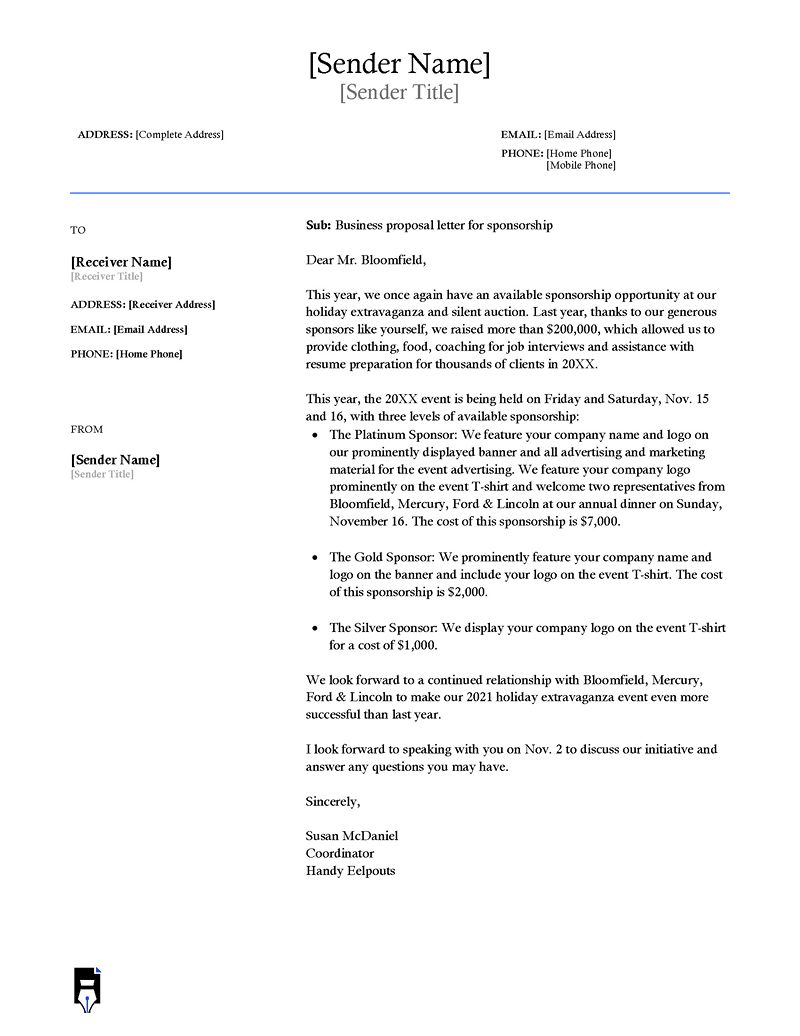
What is the purpose of business proposal letters?
As stated above, the main purpose of writing a business letter is to communicate your ideas to potential business partners. In other words, its purpose is to convince your prospective partners to buy your idea(s) to work with you under a certain capacity. It could be either you want to be a service provider, or you want them to buy your products, or simply work as cooperates.
Depending on the situation in which you want to engage your prospects, there can be various types of Business Proposal Letters. The following therefore are some of the most common types of letters you should know.
Types of Business Proposal Letters
According to experts, there exist various types of business proposal letters. Let’s take a look at them:
Formally solicited business proposal letter: In this type of business proposal letter, the prospective customer can either send you a Request for Proposal, Request for Quotation, Request for Bid, or Request for information documents. In response, you need to write a Formally Solicited Letter addressing the client’s requirements.
Informally solicited business proposal letter: An informally Solicited Business Proposal Letter works similarly to the Formal one. The prospective client will request information. However, in your response, you won’t have to follow formal requirements, as in the case of Formal Solicited Letters. A better example is a situation where a company only receives one candidate for a vacancy announced. However, in order to formalize the hiring process, the company will still ask the candidate to present his CVs and other qualifications.
Unsolicited business proposal letter: Unlike the aforementioned letters, the Unsolicited Letters are written to prospective clients without them asking for it. Usually, these types of letters are common in marketing brochures where an individual sends the letters to introduce his or her products or service. Also, these types of letters are often generalized and more flexible as they are used for cold-selling purposes.
Research business proposal letter: This is a type of scientific or academic letter used to get approval to conduct a study. The business community, just like any other sphere of the economy, needs research for it to develop.
Grant proposal letters: These types of letters are those written to grant organizations to sell a particular idea. After receiving such letters, the organization will review the proposals to see whether they meet the donor’s criteria.
Depending on the type of Business Proposal Letter you want to write, it’s important to follow a proper format and structure. Generally, all types of proposal letters follow a similar format, with the difference being in their contents.
How to Write a Business Proposal Letter
Writing a compelling business proposal letter can be challenging for many. However, if you are planning to write one, the following is a common guide that will help you all the way.
Address the recipient
You need to start your proposal letter by greeting the recipient in a formal fashion. Be sure to address him/her by the right title. As a caution, refrain from addressing a woman as Mrs. Rather, you can simply write Ms.
Introduce yourself
In the first paragraph, you need to introduce yourself to the reader by providing your personal details as well as background information. Also, you can give brief information about the proposal.
State your purpose
Here, you will clearly provide clarity on what you intend to accomplish. At the same time, you can mention any problem that you intend to fix with your proposal.
State your objectives and goals
Let the reader know both the short-term and long terms outcomes of your proposal. Remember to keep your goals SMART (Specific, Measurable Achievable, Realistic, and Timely) oriented.
For instance,
“So as to improve my productivity by 30% within the next 12 months, I am requesting you for a loan amounting to $1,000.
Define your uniqueness
In order to make your proposal outstanding, you need to highlight what sets you apart from the rest. Therefore, you can state special skills that relate to the proposed idea. Additionally, you can state various experiences and qualifications that relate to the opportunity. Providing your skills, personal experiences, and other differentiators will lead you towards a greater result.
Mention your budget and how to meet them
For any business proposal or idea to take effect, the cost is always a major factor. Therefore, you can include the financial details needed to officiate your business idea(s). This will give donors or investors a better look at the project.
Request for a Follow-up action
In this section, you can request your reader to take additional steps to follow up on your proposal. A request to action will increase the chances of a response from the recipient. This can either be by replying to your proposal through email. A phone call or any other means is convenient for them. Additionally, if you let them know of your intentions to follow up, they will take your proposal letter seriously.
Close your letter
Conclude your proposal letter by expressing your gratitude to the recipient for their time. Also, encourage them to contact you should they need any clarification. Use a professional ending clause such as sincerely or regards. This should then be followed by a comma, then sign and your name.
Attach documentation
As a bonus, you can attach any relevant documents to your Business Proposal Letter. At the very end of your letter, you can type ‘enclosures’ and list all of them. Make sure you proofread your letter to correct any grammar mistakes , spelling errors, and any other typos.
Sample Letters & Examples
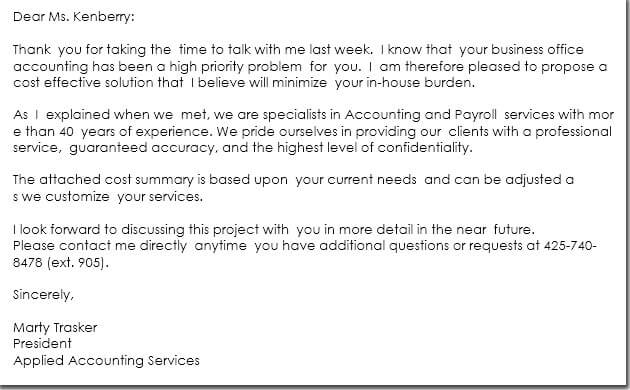
Businesses are competitive. This means that you have to be persuasive in both your cover letter and business proposal. Concentrate on your strengths. Proofread your letter carefully and ruthlessly edit out any part that even hints at doubt or shortcoming. Detail how resources will be used, detail your terms, as well as your understanding of their business and what they need. In order to be persuasive and succeed, this proposal must center around their needs and how you are the absolute best candidate to fulfill those needs. Include statistics and facts to back up any claims or statements. Request a follow-up from the buyer or client. Finally, make sure you are cordial and thank the individual for giving their attention to your proposal.
Keep reading
Sales cover letter template [free samples], 20+ best job application letter samples .
Letter Templates , Cover letters
FREE Office Manager Cover Letter Templates & Samples
18 product manager cover letter templates – tips, 18 hr cover letter templates – tips & examples, 6 best college student cover letter samples – templates.
- AI Content Shield
- AI KW Research
- AI Assistant
- SEO Optimizer
- AI KW Clustering
- Customer reviews
- The NLO Revolution
- Press Center
- Help Center
- Content Resources
- Facebook Group
Free Cover Letter Samples for Business Proposal
Table of Contents
You’ve written a killer business proposal, and you’re getting ready to submit it. But somehow, you feel something is missing. Your gut feeling is right. You’re missing a cover letter.
You’re in luck if you don’t know how to write one. This article shows you how. In addition, you’ll find a sample cover letter for business proposal that you can use whenever the need arises.
Importance of Cover Letters
A cover letter for a proposal is an important document. It is important because it provides additional information and details about the proposed project or plans that your business proposal may not contain .
It allows you to explain in detail why your business should be chosen over others and what sets it apart from competitors. A well-crafted cover letter will also demonstrate your commitment to the project and ensure the recipient knows exactly who they are working with.
The importance of a cover letter can’t be overstated when submitting a business proposal . It lets you make a positive first impression on potential customers or clients. You can significantly increase your chances of getting noticed by showing off your enthusiasm for the project in your cover letter.
A good cover letter should provide context for the recipient and help them understand more about your proposed project. You can include facts such as any previous experience you have related to the work.
It could also be special achievements that could prove beneficial to the client. This helps to showcase your knowledge in the field and emphasizes why you would be a great fit for the job. Including personal references or anecdotes within your cover letter can humanize the proposal and help you connect better.

Tips for Writing Cover Letters for Your Proposals

Below are some top-tier tops you can follow when writing your cover letter.
Grab Their Attention
This is the first thing your potential client will see. You should do all you can to grab their attention straight off. Your first paragraph shouldn’t read like a random piece of writing. Put the focus on your client and make them curious about what you offer.
Showcase Your Understanding of the Problem
A great way to make a favorable first impression is by showing that you understand the client’s problem or need. You can also add how your proposal will be the perfect solution for them. Ensure you include any research you have done on their company, demonstrating that you are serious about helping them. While doing this, you can be complimentary of the company’s efforts. It helps you worm your way into the hearts of the decision-makers.
Show Them You Have the Right Solution
To stand any chance, you have to show your potential customers that you can solve their problems. You’re not expected to be in-depth at this point. It should be a glimpse that shows you have a perfect solution for the problem.
Examples of Cover Letters for Business Proposals
Sample cover letter for business proposal 1.
Dear [Recipient],
I am writing to you today in hopes of entering a business proposal between our respective companies. With years of professional experience and an astute eye for detail, I have something unique to offer your organization.
I humbly ask for an opportunity to show you how my expertise can improve your bottom line. By utilizing my individualized approach to problem-solving and innovation, I guarantee that I can deliver results that surpass expectations.
My enthusiasm for finding creative solutions is matched only by my willingness to work hard. My ambition allows me to adapt quickly while producing high-quality work, making me a valuable asset to any team or project. Throughout my career, I have demonstrated best practices in order to maximize efficiency, productivity, and profitability.
I look forward to further discussing my capabilities and answering any questions you may have. Thank you for taking the time to consider my application. If given the chance, I will prove myself as one of the best partners your company could ever ask for.
Yours sincerely,
[Your Name]
Sample Cover Letter for Business Proposal 2
I am writing to submit my business proposal, which aims to create a lasting impact in the industry. With my extensive experience and expertise in this field, I am confident that I can bring about meaningful change for your organization.
I have an intimate understanding of the challenges faced by businesses today due to the changing market dynamics. As such, I am well-versed in devising creative solutions to optimize performance and drive success. In addition, I am also highly adept at formulating strategies that ensure long-term sustainability.
In my proposal, I will highlight some actionable steps and practical methods you can use to maximize returns while minimizing risks. The approach outlined in my proposal is designed to be comprehensive and innovative, helping you to stand out amongst your competitors. Moreover, I strive to build trust with each client through consistent communication and results-driven implementation.
I look forward to discussing how my proposition could help your business excel and propel it toward its goals. Kindly let me know if you would like me to provide any additional information or further discuss my business proposal.
Final Thoughts
A cover letter for a business proposal is an important part of the bidding process. It allows you to address the reader directly, and it gives them an idea of what they can expect from your proposal .
When writing a cover letter for a proposal, make sure to start with an introduction that grabs their attention. Then, provide a summary of the content in the proposal and explain how it will benefit the reader.
Finally, include any additional information that may be relevant to the request. By taking the time to craft a well-written cover letter for your proposal, you can increase your chances of success. A good cover letter should be professional, clear, and concise.

Abir Ghenaiet
Abir is a data analyst and researcher. Among her interests are artificial intelligence, machine learning, and natural language processing. As a humanitarian and educator, she actively supports women in tech and promotes diversity.
Explore All Proposal Generator Articles
Creative terms and conditions agreement in business proposal.
In business, proposals are essential for securing contracts and agreements with clients. However, a proposal is only complete with terms…
- Proposal Generator
Free guide to a statement of proposal sample
A statement of proposal is a document that outlines a proposed project or initiative in detail. It is typically used…
Free Proposal Letter for Training and Development for a Head Start
Training and development are essential to improve employees’ skills, knowledge, and productivity. A well-crafted training proposal can help an organization…
Detailed Guide to Free HR Consulting Proposal
HR consulting is an essential service for businesses of all sizes. HR consultants provide expert guidance to organizations on various…
Key Guide to Better Remote Work Proposal
The rise of remote work has been a significant trend in the business world over the last few years. With…
Guide to Free E-Commerce Proposal Template
E-commerce has become one of the most popular ways of doing business recently. With the increasing number of people using…
- Try for Free
How to Write a Proposal Cover Letter
Do you want to make a good first impression with your business proposals? If that’s the case, you cannot neglect your proposal cover letter. The success of your business proposals relies solely on how much attention you pay to every detail and how much effort you put into drafting it.
One key to drawing the attention of readers is to write a high-quality online proposal cover letter. If you are the one in charge of proposals, then you must learn how to make them as enticing and interesting as possible.
In this article, we will teach you how to create quality proposal cover letters and we will also tell you why using our software can help. So, keep on reading.
What Is a Cover Letter?
As you may know, a business proposal has multiple parts, respectively:
- Cover letter
- Executive summary
- The background of the company
- An assessment of the needs
- The goals of the project
- Plan of implementation
- A breakdown of the costs and budget
- Plan of evaluation
- Project sustainability
The cover letter of a business proposal is the part that acts as an introduction. It summarizes the most important details of your business proposal, proving to your clients that you are aware of their issues and that you have the right solution for them. In other words, it will present your client with your business offerings and why they matter.
The cover letter should also be good enough to convince your client to continue reading the proposal document. As you already know, first impressions matter. So, without putting effort and hard work into creating a fantastic cover letter for the business proposal, you are unlikely to persuade the client into reading more.
If you take a look at a proposal introduction letter sample, you will notice that what makes it so great is the attention to the client’s desires. Before writing any proposal application letter, you must listen to the customer and understand their needs.
Writing a cover letter for a proposal doesn’t have to involve complicated language. You can go for simple wording without getting too technical. The goal is to make the client understand what you are trying to communicate.
Why Do You Need a Cover Letter?
Before you check for proposal templates to draft your document, let’s see why you need a cover letter, to begin with.
Just like you, your clients are busy individuals. If you make them read tens of pages generated by an online proposal software, they are likely to run for the hills. They must know what they are getting into, and you should help them understand that the proposal is beneficial to them.
So, whether you use a proposal online software or not, you should always create a cover letter. It is your chance to make a good first impression and convince the reader that not only do you understand their problems, but you also have the right solutions for them. This way, they will keep on reading the full document.
The proposal cover letter allows you to be more personal and empathize with your clients. Meanwhile, business proposals are more factual. What better way to establish an emotional bond with your clients if not by relating to them on a more personal level?
Once you get clients hooked on the cover letter, they will most definitely be ready to proceed with the rest of the business proposal. They will go deeper into the technical specification of the process.
With good proposal letters, you can gain new clients without spending too much money. This can be a great benefit when you are just getting started with your business and don’t have a huge budget to spend on client acquisition.
With your proposal program of choice, you should ensure the cover letter is straight to the point. While you may be tempted to create a long and compelling proposal cover letter on your online proposals software, you will have better chances of success if you keep it short.
Clients are more likely to be attracted to brief proposal cover letters that don’t take too much of their precious time. So, if possible, check out some proposal cover examples before writing yours.
The Connection Between a Cover Letter and a Business Proposal
As already mentioned, cover letters are placed before your business proposal. More specifically, they are the introduction to your business proposal, making them the most relevant part of the document.
You cannot jump straight into a business proposal without introducing its contents first. This is why cover letters are so important – they provide your clients with some details about what is inside the document.
“Cover letter” and “introduction” are used interchangeably sometimes because these two terms refer to the same thing when it comes to business proposals. You might want to check out a sample proposal cover letter to prospect before drafting your very first cover.
Elements of a Business Cover Letter
Before you learn how to make a cover letter for a proposal, you must find out what the document includes. Here are the different elements of a proposal cover letter:
- The cover letter must be very short and concise, without dragging on. Clients will want to get a quick insight into the business proposal, not spend hours reading an introduction.
- The language should be simple, without technical and complicated terminology. The business proposal will take care of the technical side.
- Refrain from bragging about your business and all of its accomplishments. The focus should be on the client.
- Use some of the expressions and words from the communications you have already had with the client.
A great tip would also be to not blame the client for their issues. Your purpose is to present a business proposal that can help find a solution for that problem, not put the blame on the potential client and make them feel bad.
Cover Letter Structure
So, are you ready to find out how to write a cover letter for business proposal?
Before you start drafting your cover letter, you should ask a few questions that will help you during the writing process. For instance, you should find out:
· What is the source of the funding for the project?
· What reason does the client have behind this project?
· What would the client relate to the most?
· What is the final result that should be achieved?
Send your client a list with all your queries. Once you understand all these problems and find the right answers, you are ready to proceed.
Here is a general structure that most cover letters should follow:
1. The opening sentence First things first, you should open your proposal cover letter with the right question. You can begin by addressing the client’s problem right away so that you don’t waste any precious time. Then, follow it with the solutions you have for said issue. Another great method would be to get straight to the point. This is guaranteed to keep your clients engaged and make them interested in your offer. These solutions are their ultimate goal so give them what they want.
2. Keeping the right tone You are the expert, so you should sound like one. Therefore, you cannot afford to use a confused tone when writing the cover letter – you must be 100% sure about every detail you include there and back everything up with arguments.
In this case, it would be extremely helpful to get all the information you need before the drafting process even begins. Otherwise, you risk failing to gain the client’s trust.
Once again, you should focus on the client, not on your business and all you have managed to achieve throughout the years. You will have plenty of time to prove your worth. The client’s purpose is to find something that would solve their issues. They don’t want to spend time reading about a proud business owner who puts themselves on a pedestal.
Don’t make this mistake if you don’t want your potential client to just ignore your proposal cover letter.
3. Closing the proposal cover letter Once you reach the end of the cover letter, it is time to convince them to keep reading the business proposal. This is the ultimate goal of the document handed to the client, but you must word your invitation the right way.
So, you can direct them to the case study, where they will find all the project’s details and technicalities. If you manage to convince them that you are the solution to all of their problems, you are on your way to success.
The Bottom Line As you can see, the cover letter acts as the hook of the proposal. So, you must ensure it’s as qualitative as possible. If you need some help in creating your business proposal and cover letter, you can always opt for Proposa to provide you with useful templates and features. Our site speeds up the process of creating these documents, reducing your stress and ensuring you don’t waste time.
Proposa helps you and your team gain an edge over your competition with stunningly beautiful proposals that you can build in half the time. Try it for free today.
Get Started for Free
- IT/Operations
- Professional Services & Consulting
- IT and Software Solutions
- Facilities & Maintenance
- Infrastructure & Construction
Want help from the experts?
We offer bespoke training and custom template design to get you up and running faster.
- Books & Guides
- Knowledge Base

Close More Deals With Winning Proposals
Join Proposify's Co-Founder and CEO Kyle Racki along with Director of Sales Scott Tower as these proposal experts guide you through best practices refined over 10 years of analyzing millions of winning proposals.
- Book a demo
- Sign Up Free
5 Steps to Writing a Business Plan Cover Letter [+ Templates!]

Every business plan needs a cover letter. Also known as an introduction, executive summary , or overview, your cover letter is your first impression.
It sets the stage for the rest of the document and tells the reader what to expect. Most importantly, it compels the reader to spend the time it will take to review the plan in full.
But how do you write a cover letter? What should it say?
There will be no guesswork here. We’re covering all of the essential deets to include. Plus, we’ve got templates to make your life easier.
What’s in this guide :
Why your business plan cover letter is important
What to include in your cover letter, how to write your business plan cover letter, 3 business plan cover letter templates.
Without a great cover letter, your business plan will lack context and urgency—making it less likely that your audience will read it.
A cover letter surfaces the most important details from the plan, allowing you to craft a cohesive story. For instance, you might focus your cover letter on your market research findings, your estimated profit margin, or how your company is preparing to achieve your business goal. Essentially, it allows you to direct readers’ attention where you want it to go .
A business plan can also motivate you . Entrepreneurs with completed business plans are 260% more likely to start their businesses. When you write a great cover letter, it can serve as a reminder of why you’re putting in the hard work and keep you on track.
What should you include? That depends on the type of business plan you’re writing. Is this a plan to launch a startup, release a new product, or improve an existing business?
Here are some essential pieces of information to include for different types of plans. (Remember that while the business plan will delve into all the details, the cover letter will summarize the most important information.)
New business plans :
Market research
Problem or opportunity statement
Outline of initial offerings (products or services)
Business and pricing models
Time to profitability
Business risks and mitigation plans
Competitive landscape
New product launches :
Product landed cost
Product price for each channel (wholesale, DTC, Amazon, etc.)
Projected profit margin for each channel
Product branding and marketing plan
Plan for product validation and prototyping
Business improvement projects :
Current state of the business
Opportunities for growth
Opportunities for expense cutting
Opportunities for process or productivity improvements
Prioritization of improvement projects
Project goals
Project timelines
Third-party service pitches :
Client goals and objectives
Service scope
Service deliverables
Project or implementation timelines
Expected outcomes
In most cases, the cover letter should fit within one page, but for very long business plans, you might need a page and a half or even two pages to fit the overarching story you want to convey.
You should address the cover letter to your intended reader. That might be a loan officer for a business loan, a potential investor, a business partner, or a client.
Business plan cover letter example
Cover letter examples can offer inspiration and provide a jumping point for your writing.
Here’s an example of a cover letter for a business consulting plan :
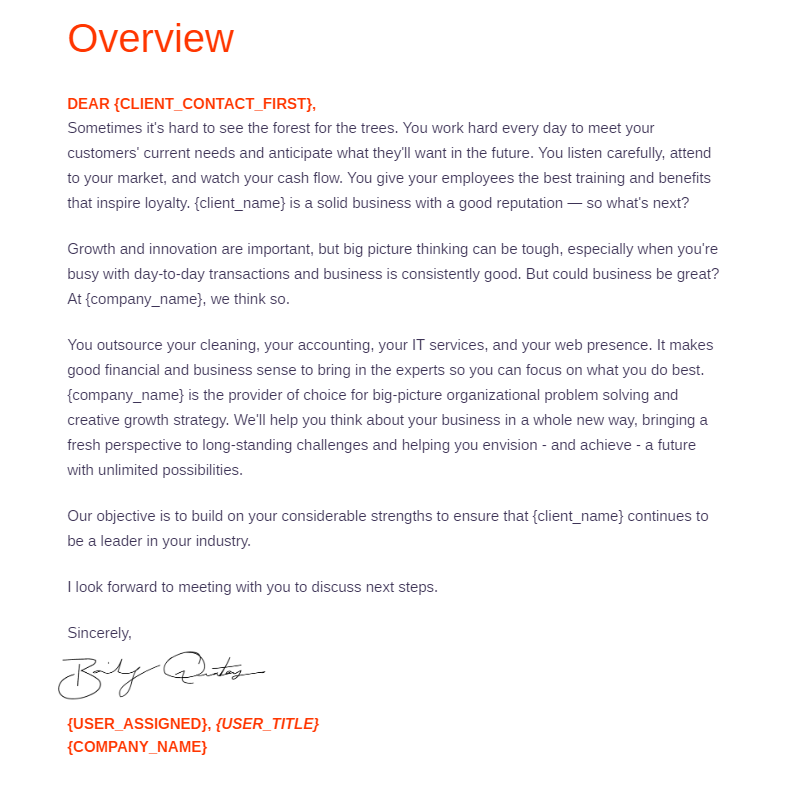
Notice how the example focuses heavily on the pain points of running a business: working hard, listening carefully, watching cash flow, etc. The cover letter makes the point that when you’re in the weeds of your business, it can be tough to envision the big picture and steer the ship.
Above all, a cover letter should be compelling. So make sure to include illustrative language, metaphors, clear pain points, and goals to bring the proposed plan to life.
Your cover letter is one of the most important sections of any business plan or business proposal . Follow these simple steps and writing tips to win over stakeholders.
Step 1. Write your business plan first
It’s nearly impossible to write a great cover letter without writing your business plan first. Why? Because your cover letter surfaces the key points from the plan so readers know why they should read the plan and what to focus on.
To write an excellent business plan, you must first begin with research. You might put together a small focus group, interview target customers over the phone, assess a handful of competitor products, and analyze influencers’ social media content within your industry.
Now that you’ve done your research, you can start writing your plan.
Make sure to include these sections:
Market problem
Your proposed solution
Your business model
Target customers
Marketing plan
Your competitive advantage
Financial projections
Required funding
Step 2. Write a strong introduction paragraph for your cover letter
Now it’s time to write the perfect cover letter.
While your cover letter will summarize a variety of points, the first paragraph should have a clear focus. It shouldn’t bounce all over the place, but should make a single compelling argument. You can start with the market opportunity, the unmet customer expectations, the prospective client’s key pain points, or the stellar profit margin your business plan is proposing.
And remember that a good hook makes the reader want to keep reading. So spend plenty of time coming up with a great first sentence that will creatively lead into your opening argument.
Step 3. Write your supporting paragraphs
The next step is to write the supporting paragraphs that drive home your key argument.
For example, if your opening paragraph states that your business plan will address a $1 billion dollar market opportunity, then the remaining paragraphs should clarify the market need (what do customers expect and why haven’t your business competitors risen to the challenge?), how you will address that need (what products or services will you offer?), and what you need from the reader (an investment, a loan, their experience as your co-founder, etc).
Consider using bullet points to quickly list out important details like market research findings, product launch plans, or business goals.
Step 4. Revise your cover letter
Don’t expect to knock it out of the park on the first try. Give yourself time to revise the cover letter over a couple of days. When you take a break before editing , you’re able to look at your writing more objectively—almost as if it was written by someone else. You also allow yourself the space to come up with creative, fresh ideas for hooks, key arguments, etc.
Step 5. Double check that the rest of the business plan follows suit
And lastly, you need to check that your cover letter matches your business plan (and that your business plan matches your cover letter) . This song-and-dance might take some time because whenever you add new info to your business plan, you need to consider if it’s important enough to be featured in the letter. And anything you add to your letter certainly needs to be covered in the plan.
Your reader is going to want to find more details within your business plan, so make sure you’re titling sections clearly. For instance, if you mention “market research” in your cover letter, then title the matching section the same way. Your cover letter serves as a reference point for what readers should hunt for in the plan, so keep that in mind when you’re formatting and adding the finishing touches.
A business plan is most commonly written when starting a new business. But documented plans are also useful when launching a new product, embarking on a big project, or pitching a service. These cover letter templates can be adapted for just about any use case.
1. Accounting plan cover letter template
If you’re sending your business plan to potential investors, lenders, or someone else you’re trying to convince, this template may be helpful. It’s short, to-the-point, and full of confidence.
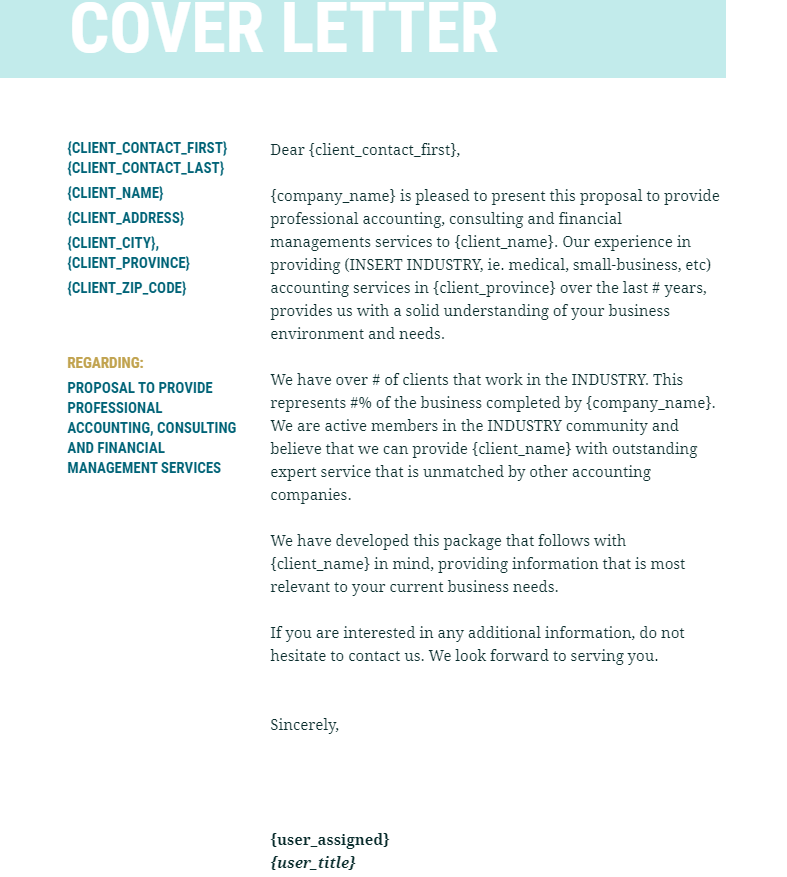
2. Investing plan cover letter template
This cover letter template is perfect for new business plans in the investing, fintech, and financial services industries. It hones in on the core pain points of amateur investors in need of financial planning.

You can adapt the pain points shared into more of a summary of your market research and the target audience’s needs. Or, you can use this template to pitch financial services directly to potential clients, making sure to include the details of the services in the rest of the plan.
3. Business project cover letter template
This project proposal template can easily be adapted for any business plan, product launch, or operational improvement project. The cover letter is written with compelling language that clearly states the needs and challenges of the project, as well as how you will address them.
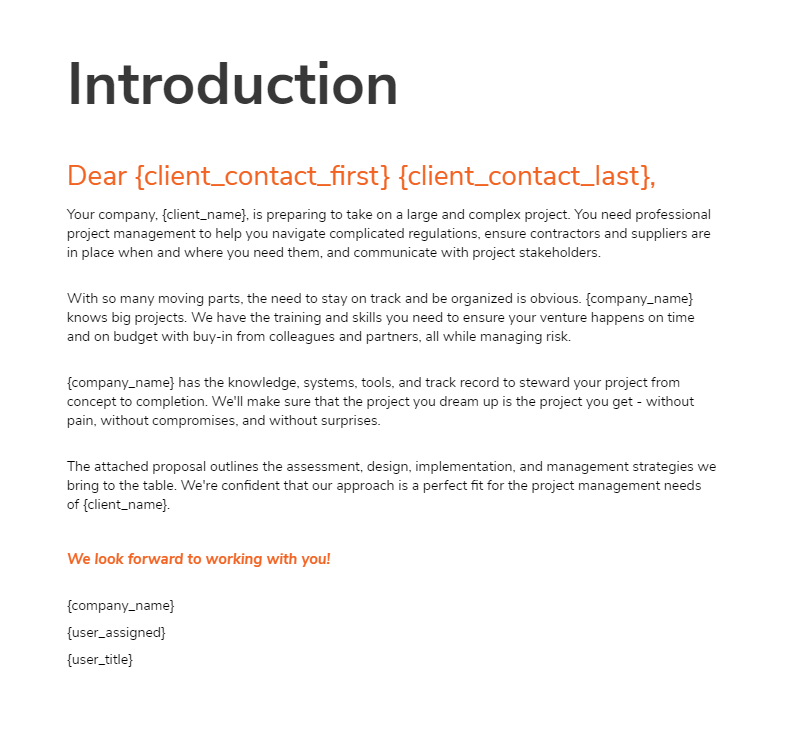
To make this template your own, start by summarizing the risks of the project, and then segway into how your business plan mitigates those—whether through hiring, training, project management, software implementation, or a combination of these and other strategies.
Send business plans and proposals that get accepted
Whether you’re sending documents to investors, partners, clients, coworkers, your boss, or other stakeholders, one thing is certain: you want your plan to be accepted.
By analyzing over a million business proposals and plans sent with our software, we found that documents are more likely to close when they include images, e-signatures, intake forms, and editable pricing tables. With Proposify , you get all of these features plus viewing analytics, so you can check when your emails and plans have been viewed. This will help you know who to follow up with to close the deal.
Send better pitches with Proposify. Learn more and start your free trial.

Dayana Mayfield is a B2B SaaS copywriter who believes in the power of content marketing and a good smoothie. She lives in Northern California. Connect with her on LinkedIn here: linkedin.com/in/dayanamayfield/
Subscribe via Email
Related posts.

| All accounts allow unlimited templates. | |||
| Create and share templates, sections, and images that can be pulled into documents. | |||
| Images can be uploaded directly, videos can be embedded from external sources like YouTube, Vidyard, and Wistia | |||
| You can map your domain so prospects visit something like proposals.yourdomain.com and don't see "proposify" in the URL | |||
| Basic | Team | Business | |
| All plans allow you to get documents legally e-signed | |||
| Allow prospects to alter the quantity or optional add-ons | |||
| Capture information from prospects by adding form inputs to your documents. | |||
| Basic | Team | Business | |
| Get notified by email and see when prospects are viewing your document. | |||
| Generate a PDF from any document that matches the digital version. | |||
| Get a full exportable table of all your documents with filtering. | |||
| Basic | Team | Business | |
| Connect your Stripe account and get paid in full or partially when your proposal gets signed. | |||
| Create your own fields you can use internally that get replaced in custom variables within a document. | |||
| All integrations except for Salesforce. | |||
| You can automatically remind prospects who haven't yet opened your document in daily intervals. | |||
| Lock down what users can and can't do by role. Pages and individual page elements can be locked. | |||
| Create conditions that if met will trigger an approval from a manager (by deal size and discount size). | |||
| Use our managed package and optionally SSO so reps work right within Salesforce | |||
| Our SSO works with identity providers like Salesforce, Okta, and Azure | |||
| Great for multi-unit businesses like franchises. Enables businesses to have completely separate instances that admins can manage. | |||
| Basic | Team | Business | |
| Our team is here to provide their fabulous support Monday - Thursday 8 AM - 8 PM EST and on Fridays 8 AM - 4 PM EST. | |||
| Sometimes the written word isn't enough and our team will hop on a call to show you how to accomplish something in Proposify. | |||
| Your own dedicated CSM who will onboard you and meet with you periodically to ensure you're getting maximum value from Proposify. | |||
| We'll design your custom template that is built with Proposify best-practices and train your team on your desired workflow. | |||
| Our team of experts can perform advanced troubleshooting and even set up zaps and automations to get the job done. |
Subscribe via email

Proposal Cover Letter
Proposal maker.
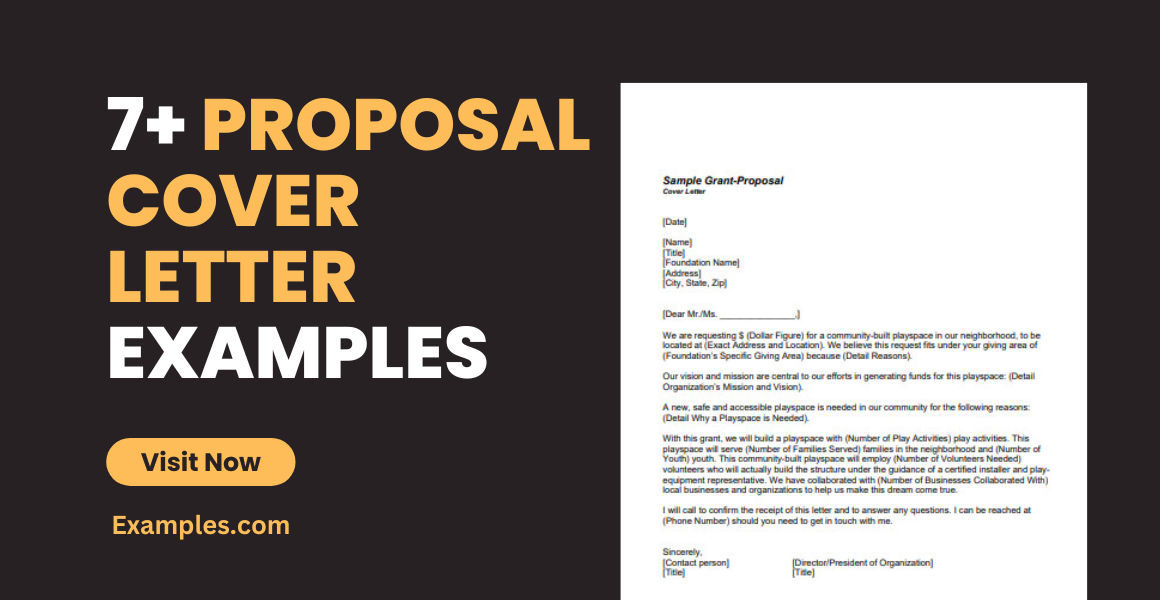
Creating a project proposal is a huge opportunity, but there’s no denying that it is also mind-boggling. Coming up with the idea isn’t the only thing you should do. There are still plenty of papers you need to process to complete the job, and a proposal cover letter is one of many. To avoid stressing out yourself even further, learn how to compose your cover letter in this article.
7+ Proposal Cover Letter Examples
1. business proposal cover letter.
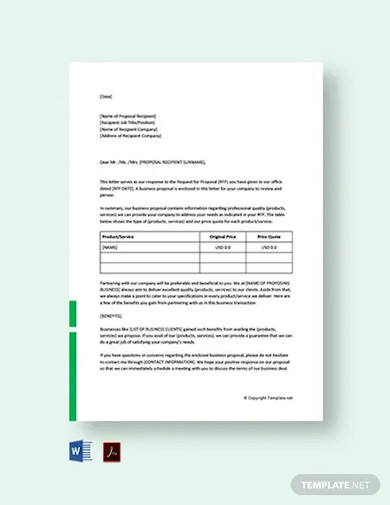
2. Sample Request for Proposals Cover Letter
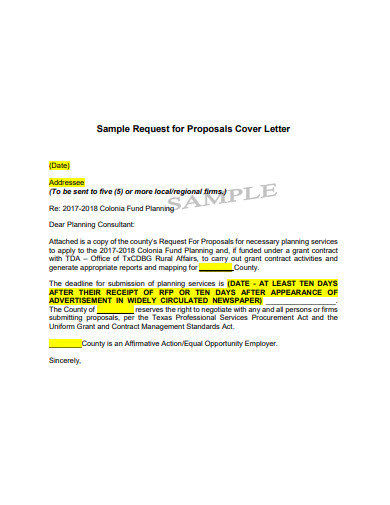
Size: 221 KB
3. Sample Grant Proposal Cover Letter
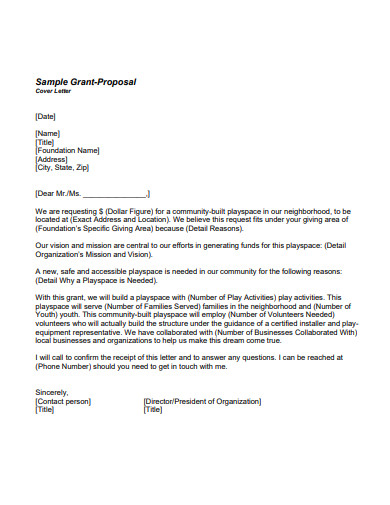
4. Qualifications Proposal Cover Letter

Size: 62 KB
5. Request for Proposal Cover Letter
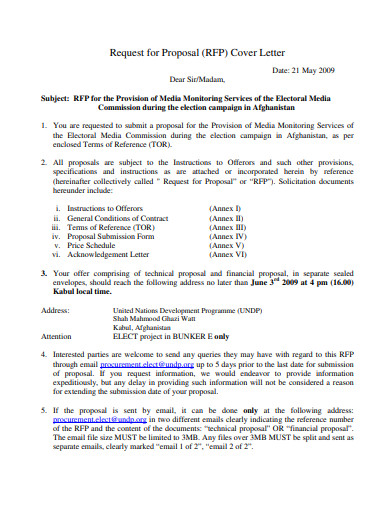
Size: 1019 KB
6. Printable Proposal Cover Letter
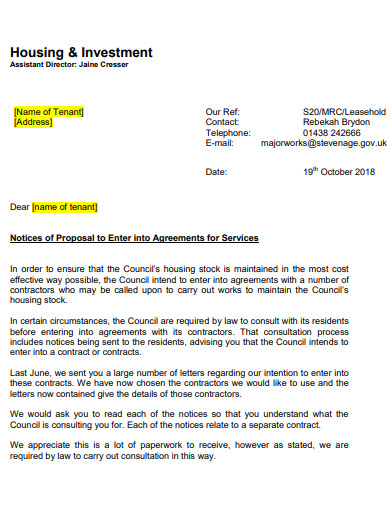
Size: 72 KB
7. Cover Letter for Request for Funding Proposals
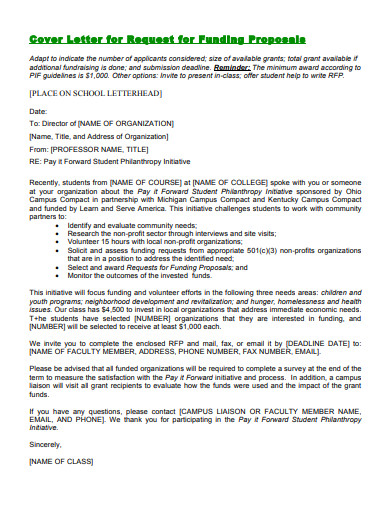
Size: 86 KB
8. Proposal Covering Letter Example
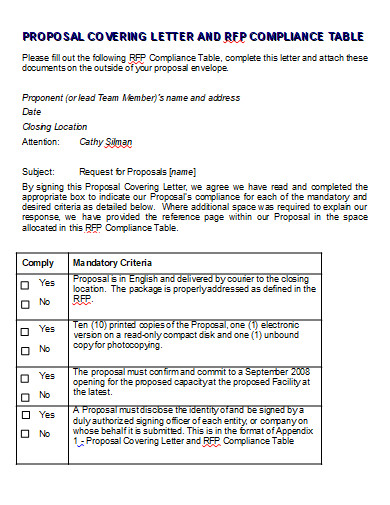
What Is A Proposal Cover Letter?
A proposal cover letter is a one-page document that provides a brief introduction of your organization and the nature of your proposal. Some people don’t include a cover letter in their project proposals, but just like an executive summary , this document sets the mood of your paper. It is where you express that you understand their needs. On top of that, show them that you also have just the proposal to satisfy them.
How to Compose an Appealing Proposal Cover Letter
A proposal, similar to a resume , needs a cover letter. Your cover letter is where the prospects decide whether your proposal is worth reading on or not. There’s a famous saying about how first impressions last. That said, although this part is optional for some, it certainly impacts your whole proposal.
1. Hook Them With Your Opening Sentence
Your prospects are busy people, so it is necessary to get straight to the point. Give them something that would leave them wanting more. Impress them and intensify their curiosity. Provide them a reason why reading your project proposal is the best choice of spending their time. Hook them and make sure they give their full attention to your cover letter.
2. Set The Vibe
Professionals often doubt the people who claim to have the answer that even they don’t. The main goal of your business proposal is to persuade your prospects and give them the confidence that you have a complete grasp of the situation. In setting the vibe, you need to engage them and make sure that they are treading the path you have set for them.
3. Give Them a Teaser
This part is where you should show them that you have the solution to their problems. Don’t go into detail yet. Keep it short but specific. Once your clients start to feel that your project plan is substantial, they will naturally want to know everything that has to do with it.
4. End it With a Powerful Closing
It’s not over just yet. The last step in creating your cover letter is to devise a closing that would make the eyes of your client sparkle. Your closing sentence must encourage them to read every page of your proposal. Not only that, but you should also let them know that, by doing that, they’d get all the information and the answers they need.
What is the structure of a proposal?
A proposal is a lengthy document that includes a lot of components. A complete proposal has a title page, table of contents, an abstract, need statement , objectives, project plan , evaluation, dissemination, personnel, types of equipment, budget , and an appendix. Incorporating all these essential elements in the format of your proposal will make it more organized.
What are the types of a proposal?
A solicited proposal is a proposal written in response to a request made by a sponsorship agency. When you submit one without the request for proposal , then the submission of the proposal is unsolicited. Other sponsors may call for a preproposal, which is a brief abstract of the proposal. There are also non-competing and competing proposals.
What is a technical proposal?
A technical proposal involves doing intensive research and providing reliable data and figures which can prove the effectiveness of the project or plan that you are proposing. This information is essential for the board of people involved in the decision-making process of whether to approve the said proposal or not.
In your proposal cover letter, you should successively hit the right spots at exactly the right time. One error can disrupt their engagement. That said, your proposal cover letter must be flawless. If done right, this one-page document can positively influence and decide the outcome of your whole business proposal .
Text prompt
- Instructive
- Professional
Generate a proposal for a new school recycling program
Compose a proposal for a school field trip to a science museum.
Business Cover Letter Example & How-To Guide in 2024

You’re a master of negotiation.
You can analyze a balance sheet in your sleep, and you've got industry know-how down to a science.
But all your business acumen evaporates when you’re staring at a blank screen, trying to draft your cover letter.
Your career centers on effective communication and strategy, and yet this is the one place you’re lost.
Don’t worry. We know your struggle, and we’re here to help.
In this article, we’re going to teach you:
- What a Job-Winning Business Cover Letter Looks Like
- 5 Steps to Writing a Flawless Business Cover Letter
- 3 Essential Cover Letter Tips for Business Professionals
Let’s get started.
Business Cover Letter Example

5 Steps for the Perfect Business Cover Letter
You've just seen a top-notch business cover letter that's sure to get noticed.
Now it's your turn to learn how to write a cover letter that shows off your skills and lands you that job! Just follow the steps we're about to dive into:
#1. Put Contact Information in the Header
Start your business cover letter by putting your contact details at the top, just like you would on your resume header . Here's what you should have up there:
- Full Name. Place your full name near the top corner of the page.
- Job Title. Use the exact title mentioned in the job ad you're applying for. With hiring managers juggling multiple roles, being specific helps them, which helps you.
- Email Address. Go with a professional email. Ditch quirky emails you might have had in your younger days. For example, [email protected] is a no-go, but [email protected] works just fine.
- Phone Number. Make sure it's a number where you can be reached easily. If the job is international, include the dialing code.
- Location. Your city and state (or country) are enough. But if you're looking for a remote role or planning to move, make that clear in both your resume and cover letter.
- Relevant Links (optional). Adding links to any important websites or social media profiles, like LinkedIn, is always a good idea.
After sorting out your details, focus on the hiring manager's contact information :
- Company Name. Write down the company's name.
- Hiring Manager’s Name. Include the hiring manager’s name, if you can find it.
- Hiring Manager’s Title. If you find out the hiring manager’s exact job title, say, the Director of Business Development , use that title instead of just "Hiring Manager."
- Location. Add the city and state (or country) of the company, especially if they have multiple locations. You can add the street address if you want to be super specific.
- Date (optional). Including the date you wrote the cover letter adds a professional flair.
#2. Address the Hiring Manager
Once you've got all your contact details down, it's time to address the person who'll be reading your cover letter .
Trust us, "To Whom It May Concern" is not how you want to start your first impression.
Do a little homework first. Look up the company website, the job ad, or their LinkedIn profile to find the person who’s hiring for the job you’re after. You should be able to find their name somewhere and add it to your cover letter.
Then address them by using "Mr." or "Ms.", followed by their last name. If you're not certain about their gender or marital status, their full name works fine. For instance:
- Dear Mr. Thompson
- Dear Alex Thompson
But if you couldn't find any information on the hiring manager or the head of the business department you’re looking to join, no worries. You can still address your letter to the team or the company at large:
- Dear Business Department
- Dear Hiring Team
- Dear Human Resources Team
- Dear Head of Business
#3. Write an Eye-Catching Opening Statement
Hiring managers spend just a few seconds on each application before deciding if it’s worth reading more into it.
That's why nailing the start of your cover letter is key, especially when you're eyeing a business role. Lead with why this job catches your eye and some of the skills you’re bringing. Showing real enthusiasm for the role or the field can also make a hiring manager take a second look.
Doing your homework about the company pays off. The better you understand them, the more you can show how well you'd fit their culture. It's a strong signal that you're not just throwing applications left and right but are genuinely keen on this specific role.
Depending on your career stage, you might want to start your business cover letter with a standout achievement or any skills that make you a shoo-in for the job. Just keep it short and sweet. The goal here is to spark interest, so the hiring manager will read the rest of your letter.
#4. Use the Cover Letter Body for the Details
The core part of your cover letter is your chance to shine as a business professional . Here, you want to go beyond the bullet points on your resume to really sell your skills and experience.
And don't just repeat your resume. Use this space to highlight what sets you apart from the competition. If you have any big wins in the business world, this is where you want to mention them. Take cues from the job ad to tailor your letter accordingly.
For example, if you're applying for a role that requires strong analytical skills, focus on achievements from your past that prove you've got what it takes. Instead of talking about general leadership qualities, point out how you've used analytics to drive business growth.
Being knowledgeable about the company you're applying to can earn you extra points. If you're familiar with their market presence or have insights into their business model, weave that into your letter. It makes the hiring manager see you as a more suitable candidate when compared to the rest.
Make sure your enthusiasm shines through your entire letter, so it’s obvious you want this job, not just a job. Express your excitement for the role and be confident in stating how you can add value to their team with your unique skills and experience.
Looking for more inspiration? Check out our other cover letter examples !
#5. Wrap It Up and Sign It
Nailing the conclusion of your cover letter is essential. You want to assure the hiring manager that they've made the right choice in reading your application to the end.
Write a brief conclusion to your cover letter so you can recap why you're the ideal candidate for the business role you’re targeting. Briefly reiterate some of your most relevant skills, but don’t go overboard. The idea here is to summarize your key selling points.
Then add a call to action. This could be an invitation for the hiring manager to further discuss your application or to arrange an interview. This leaves a lasting impression and nudges the hiring manager to do something, which increases your odds of progressing to the next step.
Lastly, sign your business cover letter like a real professional. Just pick an appropriate closing line and sign your name underneath. Here's a sample:
Feel free to contact me at your convenience so that we may arrange an interview and further discuss how I can contribute to your business goals.
Warm regards,
Alex Johnson
If "Warm regards" feels too clichéd, other professional yet approachable options include:
- Yours sincerely,
- Yours truly,
- Thanks for your time,

3 Essential Business Cover Letter Tips
You already know the basics of crafting a solid business cover letter.
Now, let's take yours to the next level with some tailored cover letter tips for the business world.
#1. Match Your Resume
Your cover letter should echo the professionalism of your resume.
Presentation skills matter, and your application is the first place you get to showcase yours. If your resume and cover letter don’t pair well, you could come off as an unpolished candidate.
Make sure your text is positioned neatly on the page, and keep the font uniform all the way through. Just as you'd handle a business proposal, pay attention to those page margins and the line spacing. And while you’re at it, remember to keep it brief—an ideal cover letter is always one neat page.
Or Use A Cover Letter Template Instead
Are you trying to get your application out there as soon as possible?
Our resume builder is a lifesaver. Use it to create the best business resume in minutes, and grab one of our matching cover letter templates to complete your application.
Every one of our templates is designed with feedback from hiring managers from around the globe, so they meet all industry standards and give your application a sleek, professional look.

#2. Mention Skills
Hiring managers want to know what you can bring to the table, and there’s no better way to show them than by mentioning your skills.
Your business cover letter should always include the most essential skills from your resume . Your skills tell the hiring manager what you can do and how much they might need to train you. But only if you mention your skills in the right way.
Don’t just toss them in there randomly, like a salad. Connect the dots for the hiring manager by weaving a narrative that backs up every skill you mention. For example, if you're good at data analysis, explain how that skill helped improve a past employer's quarterly earnings.
The key here is relevance. Discussing your skills in context shows you're not only skilled but also aware of how those skills can benefit the company. It paints a picture of you as a well-rounded candidate who’s both qualified and ready to hit the ground running.
#3. Proofread the Final Draft
Never underestimate the importance of proofreading your cover letter.
A single typo or grammatical error might seem small, but to many hiring managers, it can scream "carelessness”—a crucial cover letter mistake for any candidate who claims to have “an eye for detail”.
Hundreds of applications get tossed aside for the same reason. So, to make sure your business cover letter is spotless, take the time to read it multiple times. Consider asking a friend for a fresh perspective, just in case you missed something yourself.
We recommend you also use a spell-checking tool like Grammarly . Don’t trust it blindly, though - you should always take the time to decide for yourself if it’s correct. Clean and polished writing shows professionalism, which can make all the difference in your application's success.
Key Takeaways
And that’s all there is to writing your business cover letter!
Hopefully, we’ve inspired you, and you’ve prepared your application for that job you’ve been eyeing.
But before we say goodbye, let’s do a brief recap of what we mentioned:
- The top of your business cover letter should have a header where you include your contact information as well as the hiring manager’s. Just make sure it’s factually correct.
- Your opening paragraph should be captivating, or else the hiring manager might not bother to read more of it. Mention why you’re writing and be enthusiastic, so it shows you’re genuinely interested.
- The body of your cover letter should include the bulk of your sales pitch. Focus on your relevant achievements, qualifications, and skills and how they relate to the job you’re after.
- Make sure your cover letter matches your resume. This shows a professional touch, and it helps the hiring manager pick out your application from all the rest.

To provide a safer experience, the best content and great communication, we use cookies. Learn how we use them for non-authenticated users.
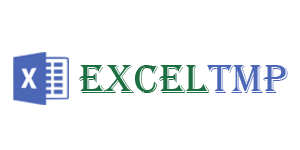
- Real Estate
Home » Business » Business Proposal Cover Letter (Word, PDF)
Business Proposal Cover Letter (Word, PDF)
In the business proposal cover letter is as crucial as the proposal itself. However, most people don’t give proper time and effort in making a cover letter template. While the first piece that the investor sees is the cover letter that covers the proposal.
Table of Contents
What is a cover letter?
It’s an accompanying letter that comes together with your resume. It is a written document that gives your introduction. It also gives additional information about your skills and experience. In addition, a cover letter is a written overview of your CV or resume. You may also like Marketing Letter Template .
Cover letter importance in the business proposal:
As we said above that the cover letter in a business proposal is as important as the proposal itself. However, there are exactly three parts of the business proposal examined i.e. cover letter, the costs, and the timescales.
The executive summary of the proposal cover letter has a strong connection. Therefore, the cover letter is the basic version of the business proposal. It just shows the key points on the major topics of the business proposal . When the investor doesn’t have enough time to read the business proposal as a whole, then this letter can still present the major points of the entire business proposal. You should also check the Proposal Rejection Letter .
Moreover, it assists you to make the investors believe there is a better return of investment in your business. It serves as the cover of your proposal. It presents your passion, eagerness, and desire to fully pursue. Above all, it contains important details that affect the entire proposal.
Structure of the business proposal cover letter:
The structure of the cover letter in the business proposal consists of three parts;
Introduction:
This part is a crucial part of your letter. It captures the reader’s attention. You should keep it clear and broad but not too broad. Don’t add too much detail. However, to be direct and straight to the point is the better option.
The body of your letter must be direct and away from indecision. It clearly describes the purpose of your business proposal. Don’t use maybe and if in your letter.
Furthermore, it communicates how qualified you are as a supporter of applying the proposal. It should give proof of your qualifications and the study you have directed in the practicability of the proposed project. You may also see the Career Change Cover Letter .
Business Proposal Cover Letter Email

Business Proposal Cover Letter Example
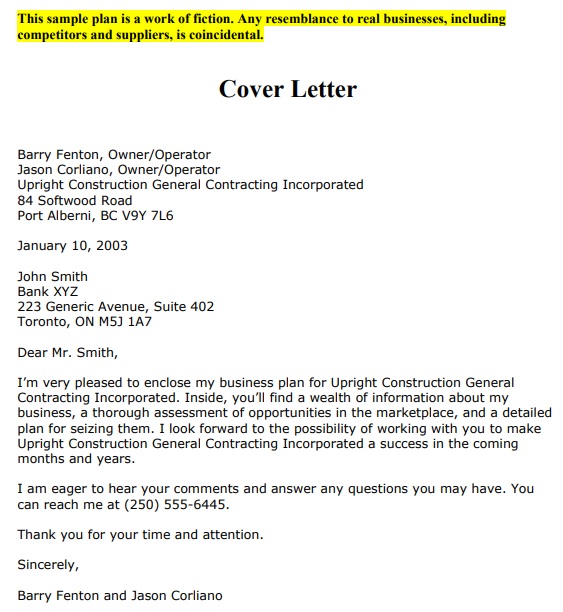
Business Proposal Cover Letter Sample
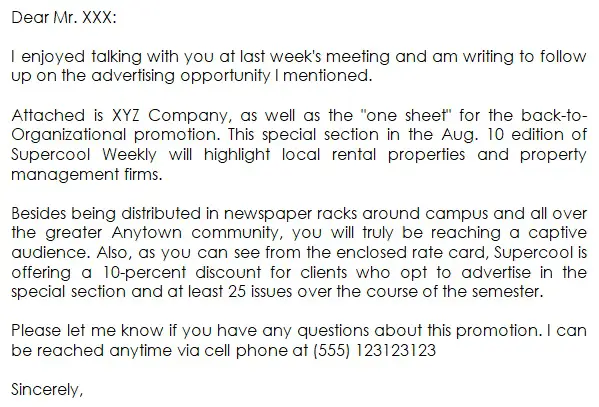
Free Business Proposal Cover Letter Template
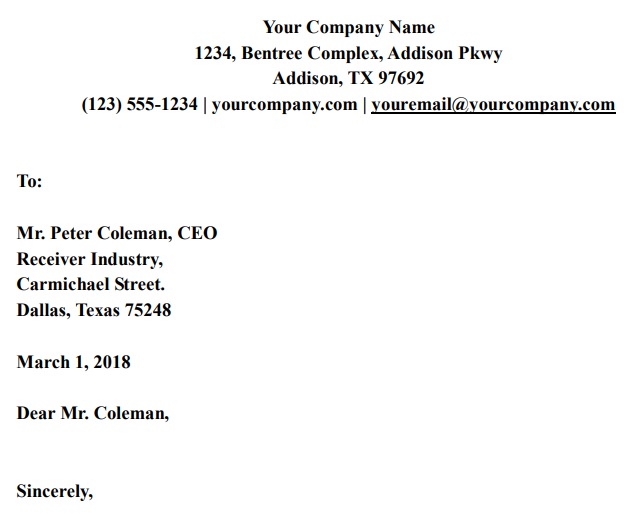
Business Proposal Letter Format
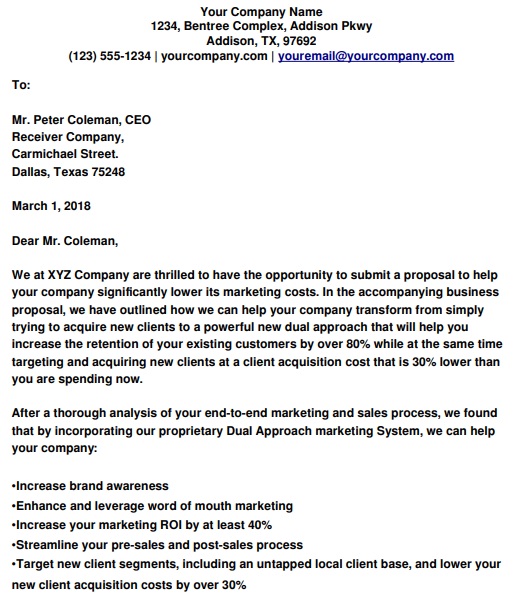
Printable Business Proposal Letter Template Word

Foundation Proposal Cover Letter
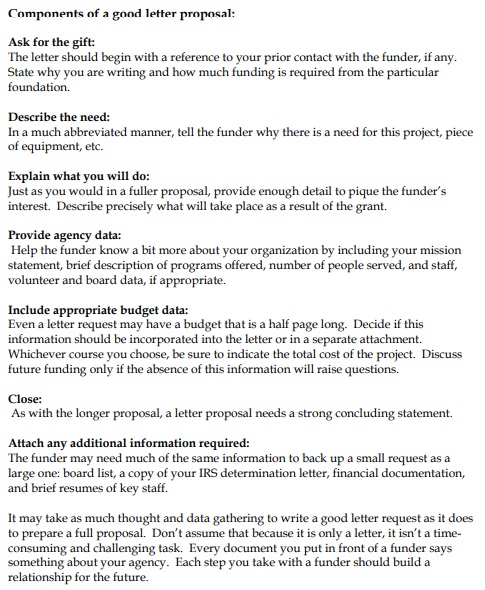
Writing a Business Proposal Letter

Conclusion:
In this part, you should invite the investor to read the proposal as a whole. Since it is the purpose of your cover letter to encourage the reader to read and understand the rest of your proposal.
Most importantly, in the closing of your letter, must include your contact information. This is because the investors know when and where to reach you when they need you for more discussion.
Hence, we concluded that the business proposal cover letter template is an important part of the whole. It not only introduces you as a supporter but also explains the main purpose of the proposal. In addition, it precisely explains the important points in the content and the entire proposal. And, it also tells the readers what they are going to read.
You May also Like
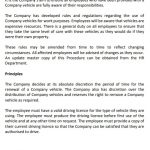
Sharing is caring!
I am Ryan Duffy and legal writer. I received a bachelor of business administration (BBA) degree from London Business School. I have 8+ years of writing experience in the different template fields and working with ExcelTMP.com for 7 years. I work with a team of writers and business and legal professionals to provide you with the best templates.
AI ASSISTANTS
Upmetrics AI Your go-to AI-powered business assistant
AI Writing Assist Write, translate, and refine your text with AI
AI Financial Assist Automated forecasts and AI recommendations
TOP FEATURES
AI Business Plan Generator Create business plans faster with AI
Financial Forecasting Make accurate financial forecasts faster
INTEGRATIONS
QuickBooks Sync and compare with your QuickBooks data
Strategic Planning Develop actionable strategic plans on-the-go
AI Pitch Deck Generator Use AI to generate your investor deck
Xero Sync and compare with your Xero data
See how easy it is to plan your business with Upmetrics: Take a Tour →
AI-powered business planning software
Very useful business plan software connected to AI. Saved a lot of time, money and energy. Their team is highly skilled and always here to help.
- Julien López
BY USE CASE
Secure Funding, Loans, Grants Create plans that get you funded
Starting & Launching a Business Plan your business for launch and success
Validate Your Business Idea Discover the potential of your business idea
E2 Visa Business Plan Create a business plan to support your E2 - Visa
Business Consultant & Advisors Plan with your team members and clients
Incubators & Accelerators Empowering startups for growth
Business Schools & Educators Simplify business plan education for students
Students & Learners Your e-tutor for business planning
- Sample Plans
WHY UPMETRICS?
Reviews See why customers love Upmetrics
Customer Success Stories Read our customer success stories
Blogs Latest business planning tips and strategies
Strategic Planning Templates Ready-to-use strategic plan templates
Business Plan Course A step-by-step business planning course
Help Center Help & guides to plan your business
Ebooks & Guides A free resource hub on business planning
Business Tools Free business tools to help you grow
How to Write a Business Plan Cover Letter?

Business Plan Cover Pages
- December 12, 2023
10 Min Read

Whether you’re approaching investors, business partners, stakeholders, or employees—making a good first impression is essential to getting your business plan approved. There’s zero room to mess up this opportunity.
This is where a cover letter helps you.
A cover letter introduces your business plan and persuades the reader to give your proposal a read. If you craft it well, your readers will likely take your business plan more seriously.
So, what is the process of writing a crisp business plan cover letter that’s detailed enough to engage readers? In this article, we’ll cover that and also share a cover letter template to help you get started.
Let’s dive right in.
What is a business plan cover letter?
A business plan cover letter is a formal document that accompanies your business plan and introduces you and your business venture to potential investors or lenders. In other words, it’s a way to sell your business idea and show why you believe in it.
In the same way that a job seeker presents a cover letter alongside their resume to an employer to get hired, you need a cover letter to accompany your business plan to secure funding or a business loan.
Why is a business plan cover letter important?
The cover letter of your business plan serves as a first impression for readers. It’s important to get it right so that it’s easier to achieve what you want with your business plan.
Here’s what makes a formal cover letter important for your business plan.
- Sets the tone for what’s to come (the content) and helps you focus readers’ attention on important aspects.
- Helps establish a personal connection before readers dive into the details and technicalities of your business.
- Helps add a humane touch to your business proposal by weaving an engaging narrative around your business vision.
- Acts as an asset when you’re seeking investment by offering valuable information and piquing investors’ interest to read your detailed plan.
That being said, a well-written cover letter attracts and retains the right audience by explicitly stating the intent and context of your business plan.
How to write a business plan cover letter?
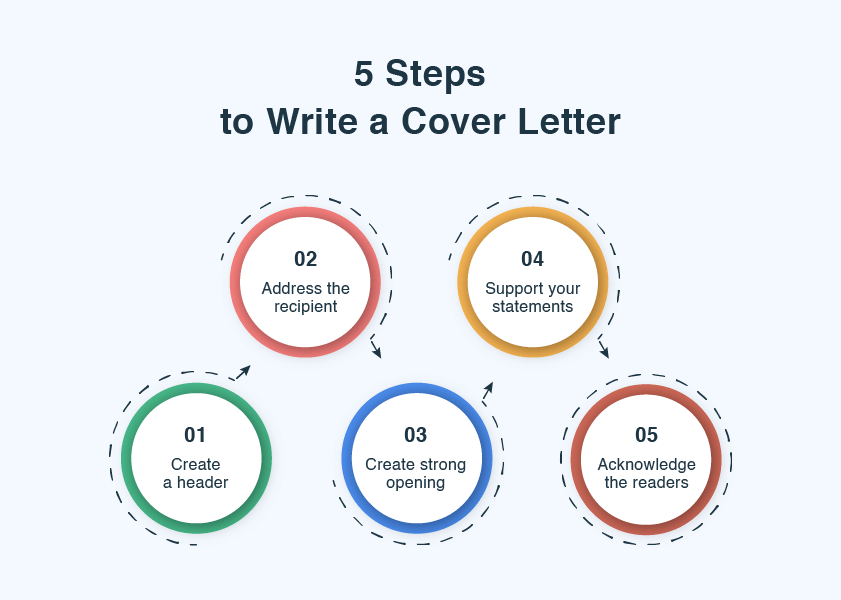
Before you start the process of writing a cover letter, ensure that you complete your business plan in detail. Remember, no matter how well you craft your cover letter, it won’t get you far if your business plan lacks weight.
Once your business plan is ready, follow these steps to write a good cover letter:
1. Create a header
The header of your business plan cover letter should include the following:
- Business name
- Contact information
- Name of investor and their institution
- Investor’s Address
If you’re sending the document via email, there’s no need to write a header, and you can jump straight to addressing the recipient with a formal greeting.
2. Address the recipient
Unless you don’t know the recipient’s name, don’t make the mistake of addressing them as “To whom it may concern.” It may give the impression that you haven’t researched the person you’re sending your business plan to.
And definitely don’t address them as “Dear investors.” Sounds unprofessional.
The solution? Address the recipient’s name, such as “Dear Mr. Green” or “Dear Ms. Jones.” It sets a good tone and is preferred over a generic greeting.
3. Make a strong start
The first paragraph of your letter should immediately grab the reader’s attention and pique their interest.
It should touch on the following key points:
- The intent of the letter
- Reason to work with this investor
- A funding utilization plan to scale the business
It should explain clearly as to why your business is a good investment opportunity.
In the following paragraphs, you can quickly cover details about the ownership type, legal formation, the structure of the business, company history, and any notable achievements.
Make sure you remain brief and crisp while offering this information.
4. Support your statements
Claims made without evidence don’t mean much. You need to provide some form of data or facts to prove that you’re worth the risk.
This is admittedly hard to do if you’re a startup since most startups fail. So, it’s a good idea to track the key startup metrics to assess your financial position and the overall viability of your business idea.
5. Close with an acknowledgment
The last paragraph of a cover letter should emphasize three things: your interest in working with the investor, the value of this opportunity, and the timeline of how you expect things to happen.
Once done, thank the reader for their time, express your eagerness to see their response, and request a meeting to discuss things further. End the letter with a formal sign-off.
And that’s everything a cover letter must include!
But before you start writing your cover letter, check the next section.
Tips for writing a formal cover letter for your business plan
Here are some tips for creating a good cover letter for business plans:
- Keep the letter short and descriptive, up to one or two pages.
- Use a formal, conversational tone, and avoid slang, jargon, and contractions. The easier it’s to read your letter, the better.
- Address the reader by name, and avoid using “To Whom It May Concern.”
- Mention your professional background, the competency of the management team, and how it benefits the business.
- Mention the individuals, institutions, or banks that have invested in your organization in the past.
These tips and a good design will help you create a professional-looking cover letter to keep your investors interested.
Upmetrics’ business plan cover letter template
Check out this sample business plan cover letter template you can modify and use to send along with your business plan.
[Your Name] [Your Company’s Name] [Your Address] [Your Contact Information] [Date]
[Investor’s Name] [Investor’s Company Name] [Investor’s Address] Dear [Investor’s Name],
I am writing to request your investment in [Your Business Name]. We are [brief overview of your business] and believe that [Your Business Name] has great potential to be a valuable addition to your portfolio.
[Provide a brief description of your current financial situation and how you’ll use the funds]
[Mention your unique selling proposition]
Attached is a copy of our business plan, which provides more information about our company and product offerings. We would appreciate it if you could take the time to review our plan and offer your feedback. We look forward to working with you.
Thank you for your time and consideration.
Sincerely, [Your Name].
Business Plan Cover Letter Example
Here are a few examples of business plan cover letters for your reference:
Cover letter example 1
William Cutler Cutler and Colors Co. 132, My Street, Kingston New York 12401 [email protected] February 17, 2023
James F. Miller Miller Industries Pvt. Ltd. 1234 NW Bobcat Lane, St. Robert, Missouri Dear Mr. Miller,
Cutler and Colors is an emerging fashion retailer in New York City specializing in men’s garments, and we’re looking to expand to six more cities in the U.S. by the end of 2023. With your financial support, we project to double our production and strengthen our supply chain efficiency.
We believe Cutler and Colors will be a valuable addition to your portfolio. Currently, we have $220,000 of our own funds invested in the business and are looking to raise an additional $500,000. The money will be used to hire more staff, set up new stores, purchase new equipment, and advertise online.
By streamlining our supply chain, we intend to undercut our competitors and offer high-quality garments at an affordable price.
Attached is a copy of our business plan which provides more information on our organization and product offerings. We would appreciate it if you could review our plan and provide feedback. We look forward to working with you.
Sincerely, William Cutler
Cover letter example 2
Emily Thompson GreenTech Innovations Inc. 789 Oak Avenue, Suite 12 San Francisco, CA 94105 [email protected] March 8, 2023
Robert J. Smith Smith Ventures LLC 456 Maple Street Denver, CO 80202
Dear Mr. Smith,
GreenTech Innovations Inc. is a forward-thinking company in the renewable energy sector based in San Francisco. We specialize in developing cutting-edge solar panel technology and plan to expand our operations to three more states by the end of 2024. With your financial backing, we aim to increase our production capacity and enhance our research and development capabilities.
We currently have $500,000 of our own capital invested and are seeking an additional $1,200,000 to support our growth. The funds will be allocated towards hiring additional engineers, upgrading our manufacturing facilities, and expanding our marketing efforts to reach a wider audience.
Our unique selling proposition lies in our innovative solar panels that boast 20% higher efficiency than the industry standard, allowing us to offer customers greater energy savings and a shorter return on investment.
Attached is a copy of our business plan, which provides more information on our company and product offerings. We would appreciate it if you could review our plan and offer your feedback. We look forward to collaborating with you.
Sincerely, Emily Thompson
Cover Letter Example 3
Michael Harris UrbanEats LLC 1010 Broadway, Suite 305 Seattle, WA 98122 [email protected] April 15, 2023
Linda K. Johnson Johnson Capital Partners 789 Pine Street Austin, TX 78701
Dear Ms. Johnson,
UrbanEats LLC is a fast-growing food delivery service focused on providing healthy, organic meal options in Seattle. We are eager to expand our services to four additional cities by the middle of 2024. With your investment, we plan to scale our operations and enhance our delivery infrastructure.
We have invested $300,000 of our own funds and are seeking an additional $750,000. The investment will be used to lease new kitchen spaces, hire more chefs and delivery personnel, and enhance our mobile app to improve user experience.
Our unique selling proposition is our commitment to sustainability and healthy living. We offer meals made from locally sourced, organic ingredients, which sets us apart from other food delivery services.
Attached is a copy of our business plan, which provides more information about our company and product offerings. We would appreciate it if you could review our plan and provide feedback. We look forward to the possibility of working with you.
Sincerely, Michael Harris
Tailor a cover letter to send with your business plan
A cover letter is the first thing an investor would read before diving into your business plan. Clearly, a lot riding on a good first impression.
Now, identify the information that is of utmost importance to your readers, and using the template above, devise an engaging summary for your cover letter.
However, if you still haven’t completed your business plan, do that first.
Let the Upmetrics business planning app help you craft compelling business plans in just about 10 minutes. All you need to do is offer some basic business details, and its AI business plan generator will quickly whip up a fresh plan custom-made for you.
Add your business plan cover letter to it, and you’re all set to get your proposals approved.
Build your Business Plan Faster
with step-by-step Guidance & AI Assistance.
Frequently Asked Questions
How long should a business plan cover letter be.
Ideally, one page. If there’s more to add, a maximum of two pages is permissible. That said, it’s best to write a shorter cover letter than a longer one.
Can I include statistics in a business plan cover letter?
Yes, you can mention data in your cover letter to support your claims, but don’t overdo it. Your business plan already highlights your financials and future projections in great detail.
Can I skip writing a business plan cover letter?
If you’re sending a physical copy of your business plan to an investor or lender, it’s crucial to attach a cover letter. However, a cover letter isn’t necessary if you’re sending it via email, as you can simply write a note in the email’s body.
About the Author
Upmetrics Team
Upmetrics is the #1 business planning software that helps entrepreneurs and business owners create investment-ready business plans using AI. We regularly share business planning insights on our blog. Check out the Upmetrics blog for such interesting reads. Read more
Reach Your Goals with Accurate Planning

Search for:
Candid Learning
Candid learning offers information and resources that are specifically designed to meet the needs of grantseekers..
Candid Learning > Resources > Knowledge base
How do I write a proposal cover letter?
The cover letter often is your proposal's first chance to connect your project with the reader's philanthropic mission. It goes on top of a proposal, but it is not the same as an executive summary, which states your proposal's key points.
At minimum, your cover letter should:
- Request your dollar amount and introduce your project in the first sentence
- Describe how your project and/or organization will further the foundation's mission
- Reference your most recent contact with the foundation
- List the proposal's contents
- Give contact details in case the funder wants additional information
- Be signed by your organization's executive director
Dive in to this topic with our self-paced course: Crafting compelling grant proposals Learn how to craft a compelling and competitive proposal.
Sample cover letters
Samples of actual cover letters are usually hard to find because the donor and applicant may be very protective of these documents. Also, they usually are very specific to the project, organization, and funder.
However, our Sample Documents section is a searchable collection of proposals, cover letters, letters of inquiry, and proposal budgets that were actually funded. Each proposal includes a critique by the decision-maker who awarded the grant.
You also might check if anyone in your professional networks would be willing to share sample proposals and cover letters.
See also our related Knowledge Base articles:
How do I write a grant proposal?
What should be included in a letter of inquiry? Where can I find samples?
More articles on proposal writing.
Have a question about this topic? Ask us!
Candid's Online Librarian service will answer your questions within two business days.
Este artículo está disponible en español
Explore resources curated by our staff for this topic:, staff-recommended websites, sample cover letters & proposals.
Nonprofit Guides has a sample proposal cover letter, letter of inquiry, proposal, budget, and other items that may be of use to grantseekers.
Sample Grant-Proposal Cover Letter
Sample cover letter that introduces a grant proposal.
How to Write an Effective Grant Proposal Cover Letter
Lists attributes and tips to write good cover letters. Includes sample cover letter.
Sample Cover Letter,Proposal,Letter Proposal
Each section includes a brief description of its purpose and what to include.
Staff-recommended books

Winning Grants Step by Step
Find: Amazon | Free eBook
Sign up for our newsletter
- Sample Letters
FREE 9+ Sample Business Proposal Cover Letter Templates in PDF | MS Word
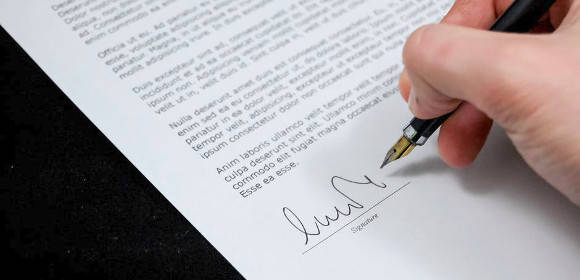
Business proposal cover letter samples are used for making absolutely great business proposal concepts which are presentable. A cover letter is always written to introduce a concept, some information, a candidature or a project. Hence this cover letter format also has the same motto, and that is to introduce the business to the clients. Hence the proposal details are written in a gist into the letter, and you are suggested to this exact style in the most professional approach here through the various samples of business cover letters
Business Proposal Cover Letter
31+ sample business proposal letters, 28+ business proposal letters in doc, business proposal cover letter template.
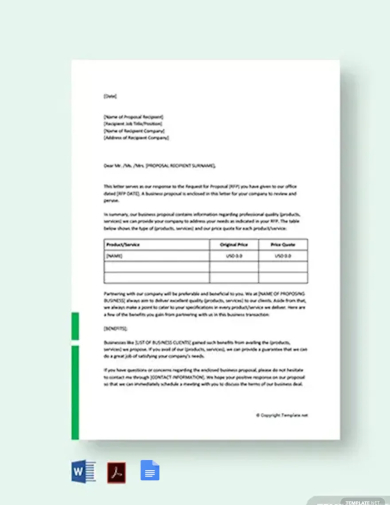
- Google Docs
Business Funding Proposal Cover Letter Template
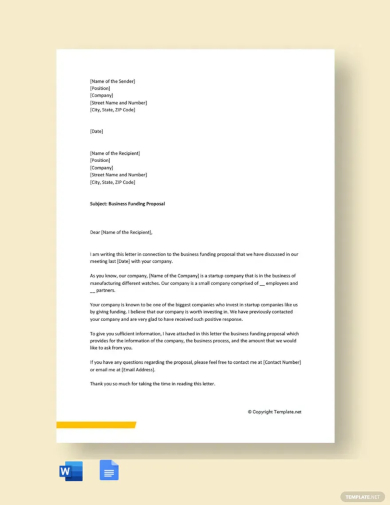
Sample Business Partnership Proposal Cover Letter Template

Size: 17 KB
If you are to propose an sample invitation of business partnership to an individual or a board, then this is the format which you should use. This cover letter sample contains the exact style of proposing a business partnership. Use this to get your ideas clear on to the paper with details of partnership clauses and business in a precise way.
Business Loan Proposal Cover Letter Template
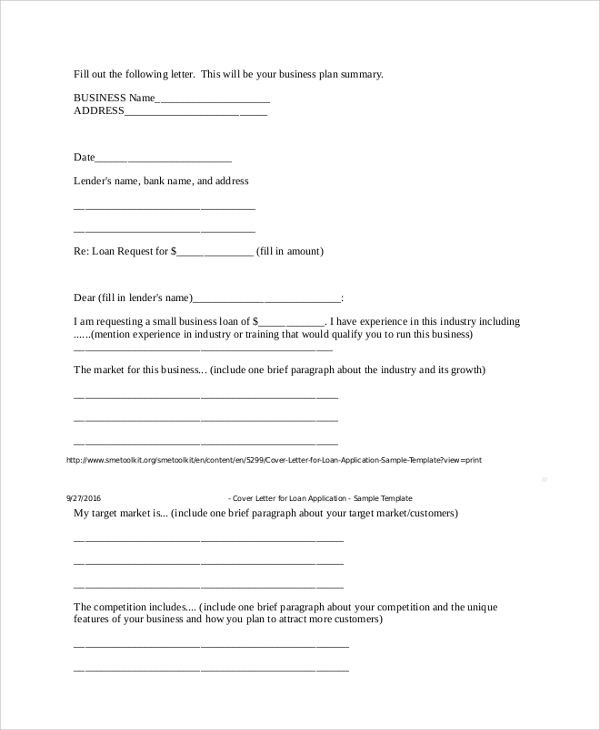
Size: 86 KB
The business loan proposal cover letter is another interesting format, where you actually propose to get a business loan. This format again contains a business loan application format fused with the cover letter style that gives an inception of why you need the loan and how you are going to return it and the total concept in a nutshell.You may also see business plan cover letters .
Business Project Proposal Cover Letter Example

Size: 282 KB
The business project proposal cover letter format is another style where you propose the business proposal simply, but in a, to the point and precise way to simply introduce the concept through the cover letter. The official and business style approach which makes it catchy, attention seeking and yet smart and formal is suggested here in the cover letter format.You may also see business cover letter
What are Business Proposal Cover Letter Samples?
The business proposal cover letters are simply cover letters which carry an introduction to the business proposal. A business proposal that needs to be proposed should contain business type, details, sample plan , project time, manpower, resources, business style, and the requirements, revenue generation plan etc. All these combined together makes for the business proposal cover letter, and there can be various styles of business proposal cover letters with various concepts and uses. The official style, business way of approach, and the formal layout all are suggested in the samples so that one may get inspired to write a nice business proposal cover letter easily. You may also see generic cover letter
Business Proposal Submission Cover Letter Template
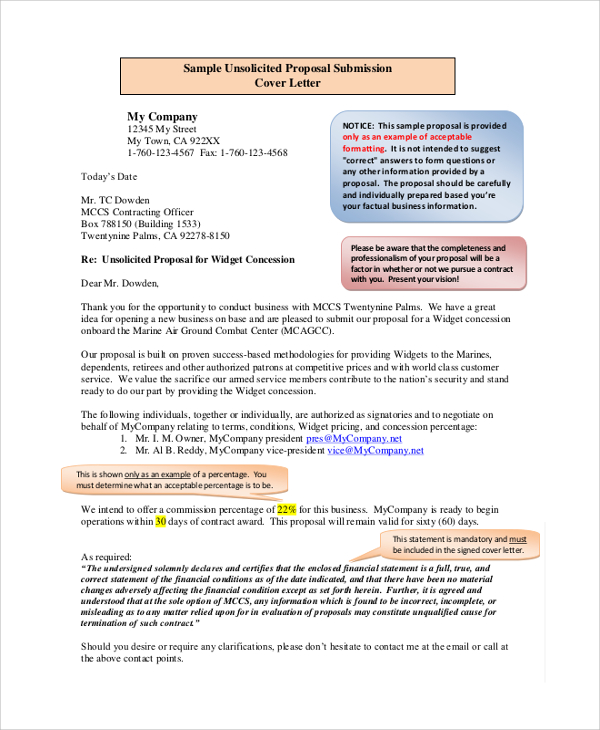
Size: 548 KB

Size: 25 KB
Sample Business Partner Email Cover Letter Template
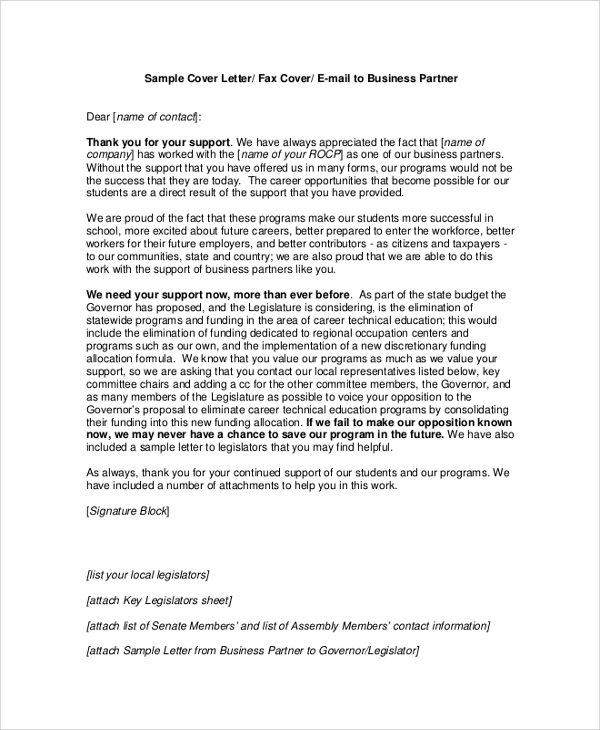
Size: 58 KB
Uses and Purpose of Business Proposal Cover Letters
The uses of business proposal cover letters are many and they are as follows:
1. It helps you propose a business.
2. It lets you tell the plans in a precise and to the point way.You may also see business proposal letters to client
3. It has a typical official approach blended with the business seeking catchy style.
4. You may use the format to write several kinds of business related cover letters which can be for a new business, partnership proposals, loans, agreements, contracts etc.You may also see proposal letter formats .
The business cover letter samples have just one purpose and that is to show the layman the style in practice to propose a business or business related information in a cover letter style.You may also see business plan cover letter
Formal Business Proposal Cover Letter Template
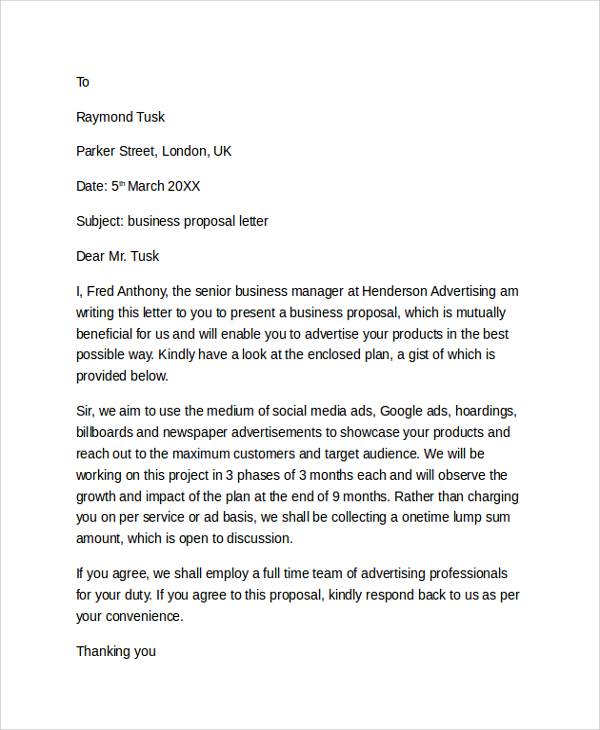
Benefits of using Business Proposal Cover Letter Samples
A project proposal sample, plan or sample application should be accompanied with a cover letter which describes in short and yet nicely, what it is about, and this style is very well interpreted through the samples. The benefit of a cover letter in any business proposal is that, before reading the entire proposal by taking time, the reader is intimidated of the purpose of the proposal in short, through the cover letter. So basically the cover letter just introduces the proposal plan in short and in the most interesting and official way to make the plan proposal, even more inviting to the reader.You may also see email cover letter samples
To start sample planning a business plan or proposal sending or presentation in the most effective manner, it’s best to plan a neat and smart Business Cover Letter Format. The cover letter must be short and yet interesting to give a nice idea of what to anticipate from the business proposal letter or application.You may also see lease proposal letters
If you have any DMCA issues on this post, please contact us !
Related Posts
Sample thank you letters to teacher, sample college letter of intent, sample reference letter templates, sample affidavit of support letter templates, resignation letter with reason samples, sample college acceptance letter templates, sample friendly letter templates, letter of intent for employment samples, letter of support samples & templates, sample business meeting invitation letter templates, sponsorship letter templates, sample contract agreement letter templates, sample proposal request letter templates, sample document request letter templates, sample job appointment letter templates, 9+ sample advertising proposal letters, 8+ sample catering proposal letters, 8+ sample business proposal letters to client, 7+ sample business cover letters.

How to type a business proposal letter?
How to Type a Business Proposal Letter
When seeking funding, partnerships, or new business opportunities, a well-crafted business proposal letter can make all the difference in winning over clients, investors, or stakeholders. A proposal letter is a formal document that outlines the purpose, scope, and value of a proposed project or partnership. In this article, we’ll provide a step-by-step guide on how to type a business proposal letter that showcases your ideas, expertise, and potential.
Understanding the Purpose of a Business Proposal Letter
Before starting to type your proposal letter, it’s essential to understand the purpose it serves:
- Introduce your company or organization
- Outline the proposed project or partnership
- Highlight the benefits and value it offers
- Demonstrate your expertise and credentials
- Showcase your team’s qualifications and experience
- Encourage the reader to consider your proposal
Crafting the Executive Summary
The executive summary is a brief overview of your proposal that should appear at the beginning of your letter. Keep it concise , ideally no longer than 1-2 paragraphs:
- Provide a hook : Grab the reader’s attention with an interesting fact, statistic, or quote related to your proposal
- Summarize the proposal : Highlight the main objectives, key features, and benefits of your project or partnership
- Conclude with a call-to-action : Encourage the reader to continue reading to learn more
The Body of the Proposal Letter
The body of your proposal letter should provide detailed information about your project or partnership, including:
- Problem Statement : Identify a problem or need in the industry or market that your proposal addresses
- Solution : Outline your proposed solution and how it will address the problem
- Methodology : Describe your approach, strategies, and timelines for executing the project or partnership
- Timeline : Provide a detailed project schedule or milestones
- Budget : Include a breakdown of estimated costs and expenses
- Key Partners and Team Members : Introduce your key partners, team members, and their qualifications
The Format of a Business Proposal Letter
When formatting your proposal letter, consider the following:
- Use a formal business letter structure : Include your company’s letterhead, address, date, salutation, body, closing, and signature
- Use a clear and concise tone : Avoid jargon and technical language that may confuse the reader
- Use headings and subheadings : Organize your letter with headings, subheadings, and bullet points to make it easy to scan and understand
- Use visuals and diagrams : Include images, charts, graphs, or diagrams to support your proposal and make it more engaging
Including a Call-to-Action
A call-to-action (CTA) encourages the reader to take a specific action, such as:
- Scheduling a meeting to discuss the proposal
- Submitting an offer or bid
- Providing feedback or comments
Tips and Best Practices
When writing a business proposal letter, keep the following tips in mind:
- Research the client or audience : Tailor your proposal to their needs, interests, and pain points
- Focus on the benefits : Emphasize how your proposal will benefit the client or audience, rather than just listing features or services
- Use metrics and data : Incorporate metrics, statistics, and data to support your proposal and demonstrate its value
- Keep it concise and scannable : Use headings, bullet points, and white space to make your proposal easy to scan and understand
Example Business Proposal Letter Outline
Here is a sample outline for a business proposal letter:
I. Executive Summary
- Problem statement
- Solution overview
- Call-to-action
II. Introduction
- Company overview
- Purpose of the proposal
III. Proposal Overview
- Solution description
- Key features and benefits
- Methodology
IV. Methodology
- Approach and strategies
- Timeline and milestones
- Budget breakdown
V. Conclusion
- Summary of proposal
VI. Appendices
- Additional resources
By following these guidelines and best practices, you’ll be well on your way to crafting a business proposal letter that showcases your ideas, expertise, and potential. Remember to keep your letter concise, clear, and well-organized, and don’t hesitate to use visuals, diagrams, and metrics to support your proposal. Good luck!
Leave a Comment Cancel Reply
Your email address will not be published. Required fields are marked *
Save my name, email, and website in this browser for the next time I comment.

IMAGES
VIDEO
COMMENTS
Here are some steps for how to write a proposal cover letter: 1. Include contact information. It's important that you include your contact information, your name, email, phone number, and the contact information of your organization, its name, email, phone number, website and even social media pages. This is because the reader of your proposal ...
Step 1: Read the RFP Cover to Cover. This step seems obvious, but it's surprising how many teams skip it. You must read the RFP thoroughly, from cover to cover, before beginning your letter. While reading, take note of any recurring themes from your prospect. Perhaps they focus on quality of design and ease of use.
Proposal cover letters are brief overviews that introduce the more in-depth content of a proposal. Cover letters are normally the first page of a proposal, making them the first impression you will give and your first opportunity to convince the reader to work with you. These letters directly communicate with the client and set the stage for ...
Aside from all the necessary parts like the address, greetings, closings, etc. it is important to know the major structure of a cover letter for your business proposal. 1. Introduction. It is the most important part of you letter. It is the hook and it should immediately capture the reader's attention.
A proposal cover letter is a one-page document that helps you pitch your offer to a client, business partner, or any kind of prospect you want to do business with. It is usually written as a response to an RFP (Request For a Proposal) and can sometimes be referred to as a cover letter for an RFP .
1. Create a business header. Write your contact information at the top of the letter followed by the date. Then add the contact information of the recipient. If you're sending an email proposal, you'll use a subject line with your name and general purpose instead of a business header. 2.
Make sure to highlight the key benefits, focusing on what's in it for your reader. Be specific and use facts, figures, and examples to support your claims. Keep your paragraphs organized and use bullet points or bold text to emphasize important information. For example: Benefit 1: Reduction in production costs by 30%.
First, a proposal cover letter and an executive summary have some things in common: They should appear at the beginning of your proposal. They should be one page long, maximum. They should be prospect-focused. They should NOT be overly sales-y or pitchy. They should NOT be a detailed rehash of the entire proposal.
7 steps to write a proposal cover letter. The compact nature of the proposal cover letter makes it difficult to fit everything in one or two pages. Good writers are valuable assets in these instances. Every proposal cover letter should contain the following sections: Thank the issuer (and broker, where applicable) for the opportunity.
If you received a formal request for proposal (RFP), you'll know exactly who to address. Once you do that, highlight your reason for sending the proposal - i.e. the problem at hand and your solution for it. As you can see in our proposal letter template, you should keep it brief and get straight to your points.
Close your letter. Conclude your proposal letter by expressing your gratitude to the recipient for their time. Also, encourage them to contact you should they need any clarification. Use a professional ending clause such as sincerely or regards. This should then be followed by a comma, then sign and your name.
Sample Cover Letter for Business Proposal 2. Dear [Recipient], I am writing to submit my business proposal, which aims to create a lasting impact in the industry. With my extensive experience and expertise in this field, I am confident that I can bring about meaningful change for your organization.
The cover letter of a business proposal is the part that acts as an introduction. It summarizes the most important details of your business proposal, proving to your clients that you are aware of their issues and that you have the right solution for them. ... If you take a look at a proposal introduction letter sample, you will notice that what ...
Here are some steps on how to write a proposal cover letter: 1. Format your proposal. Start by deciding on the layout of the proposal letter. Many companies follow a standard drafting format and include important information such as contact and project details.
Proposal letter template #3 (Business partnership) When you're writing a letter to present a proposal for a business partnership, the level of formality will depend a lot on the person or entity you're pitching to, and how well you know them. Whether formal or informal, the following template will help you cover your bases.
Consider using bullet points to quickly list out important details like market research findings, product launch plans, or business goals. Step 4. Revise your cover letter. Don't expect to knock it out of the park on the first try. Give yourself time to revise the cover letter over a couple of days.
Hook them and make sure they give their full attention to your cover letter. 2. Set The Vibe. Professionals often doubt the people who claim to have the answer that even they don't. The main goal of your business proposal is to persuade your prospects and give them the confidence that you have a complete grasp of the situation.
Top ↑ Business Cover Letter Example 5 Steps for the Perfect Business Cover Letter #1. Put Contact Information in the Header #2. Address the Hiring Manager #3. Write an Eye-Catching Opening Statement #4. Use the Cover Letter Body for the Details #5. Wrap It Up and Sign It 3 Essential Business Cover Letter Tips #1.
However, there are exactly three parts of the business proposal examined i.e. cover letter, the costs, and the timescales. The executive summary of the proposal cover letter has a strong connection. Therefore, the cover letter is the basic version of the business proposal. It just shows the key points on the major topics of the business proposal.
First, see this sample business cover letter for a candidate with a few years of relevant professional experience as a business development consultant, Thomas. The job to which Tom is applying requires experience in planning, organizing and managing business projects, including performing research, developing detailed business proposals, as ...
Remember, no matter how well you craft your cover letter, it won't get you far if your business plan lacks weight. Once your business plan is ready, follow these steps to write a good cover letter: 1. Create a header. The header of your business plan cover letter should include the following: Name. Business name.
At minimum, your cover letter should: Request your dollar amount and introduce your project in the first sentence. Describe how your project and/or organization will further the foundation's mission. Reference your most recent contact with the foundation. List the proposal's contents. Give contact details in case the funder wants additional ...
The uses of business proposal cover letters are many and they are as follows: 1. It helps you propose a business. 2. It lets you tell the plans in a precise and to the point way.You may also see business proposal letters to client. 3. It has a typical official approach blended with the business seeking catchy style. 4.
Here is a sample outline for a business proposal letter: I. Executive Summary. Problem statement; Solution overview; Call-to-action; II. Introduction. Company overview; Purpose of the proposal;